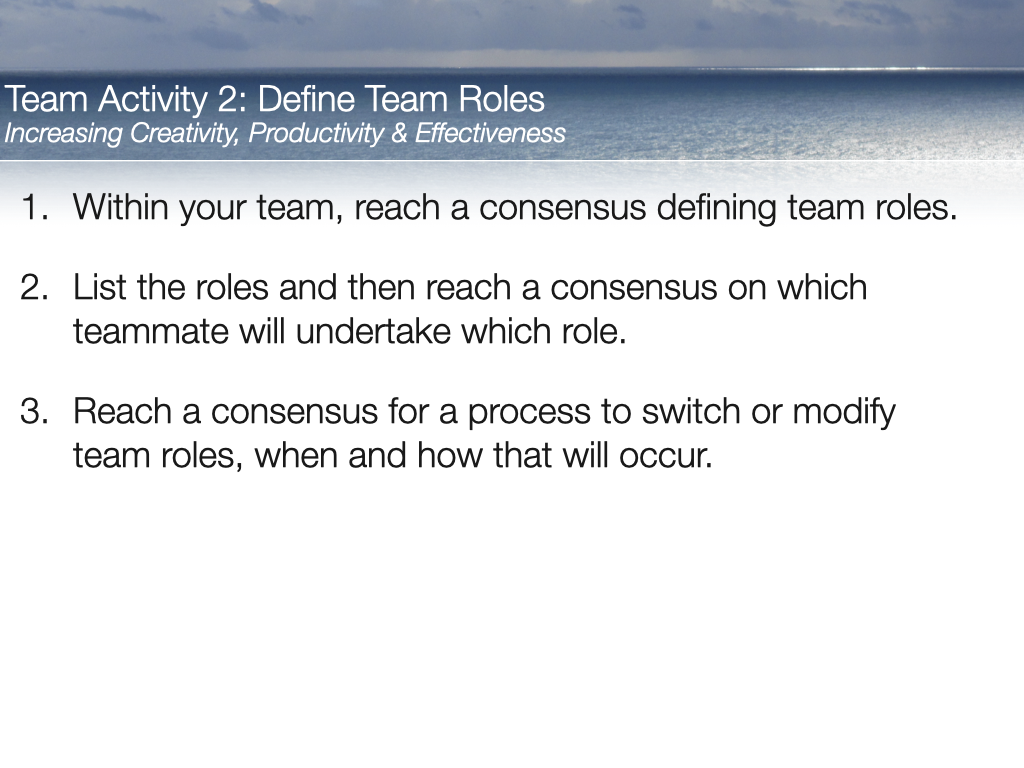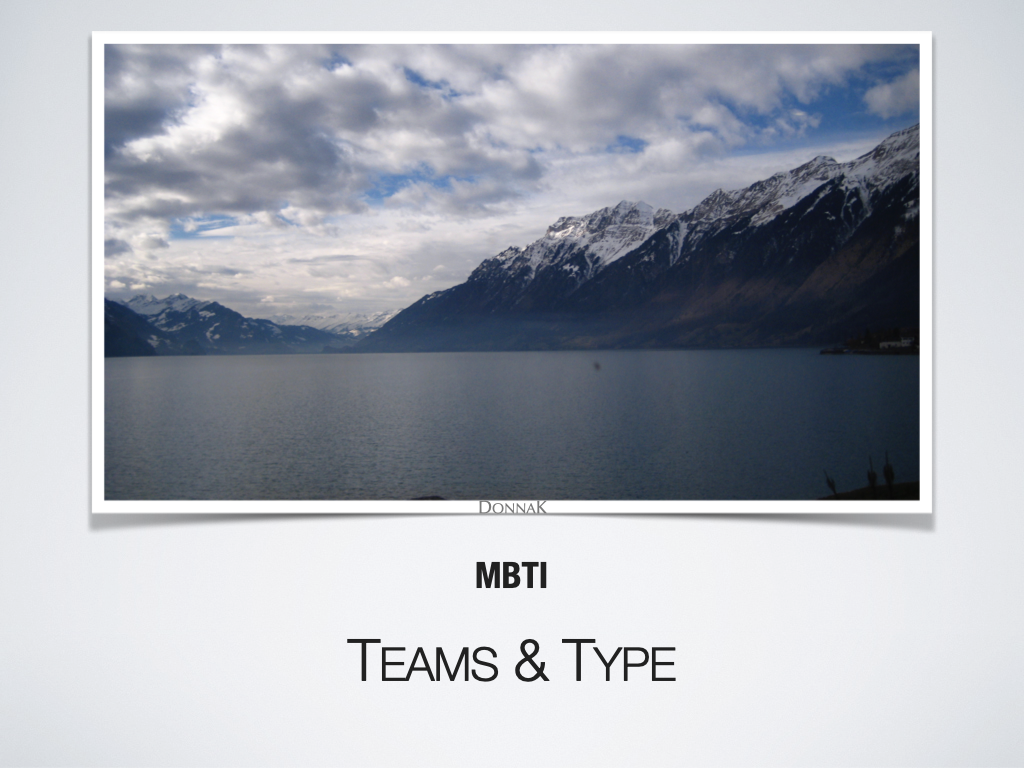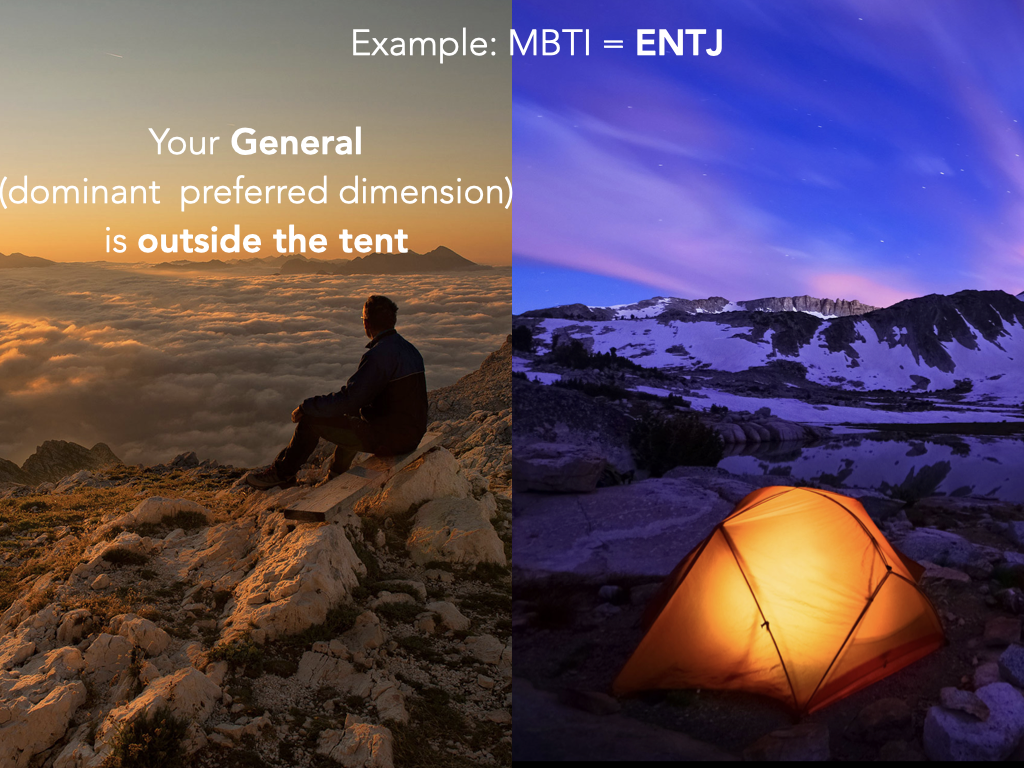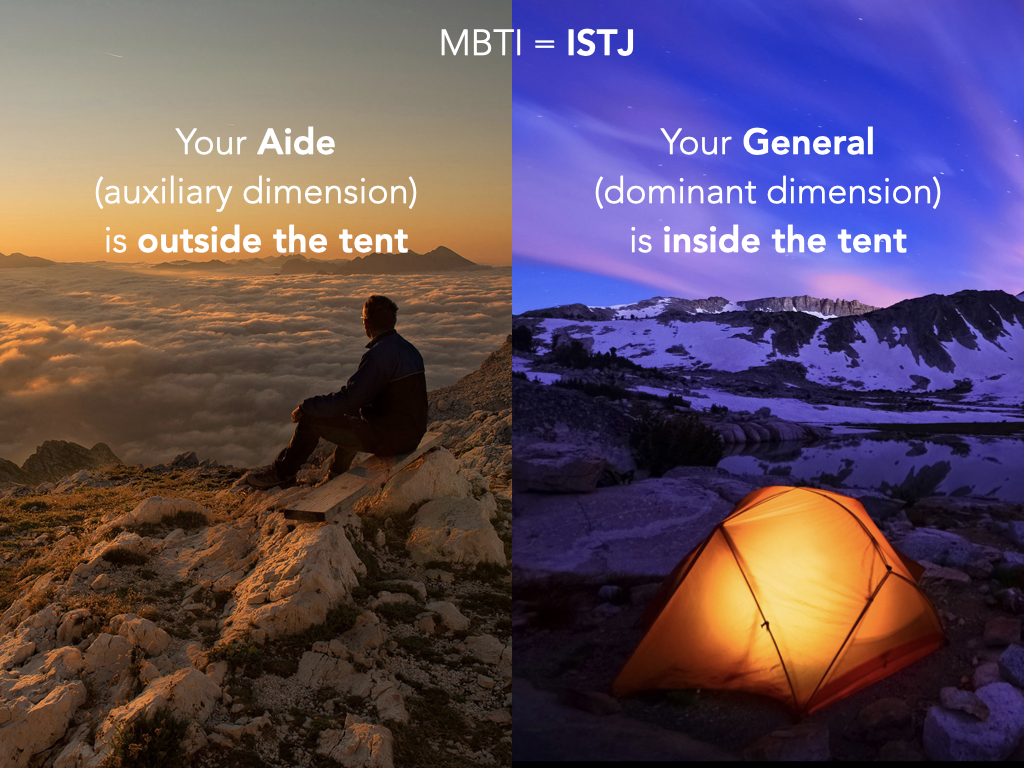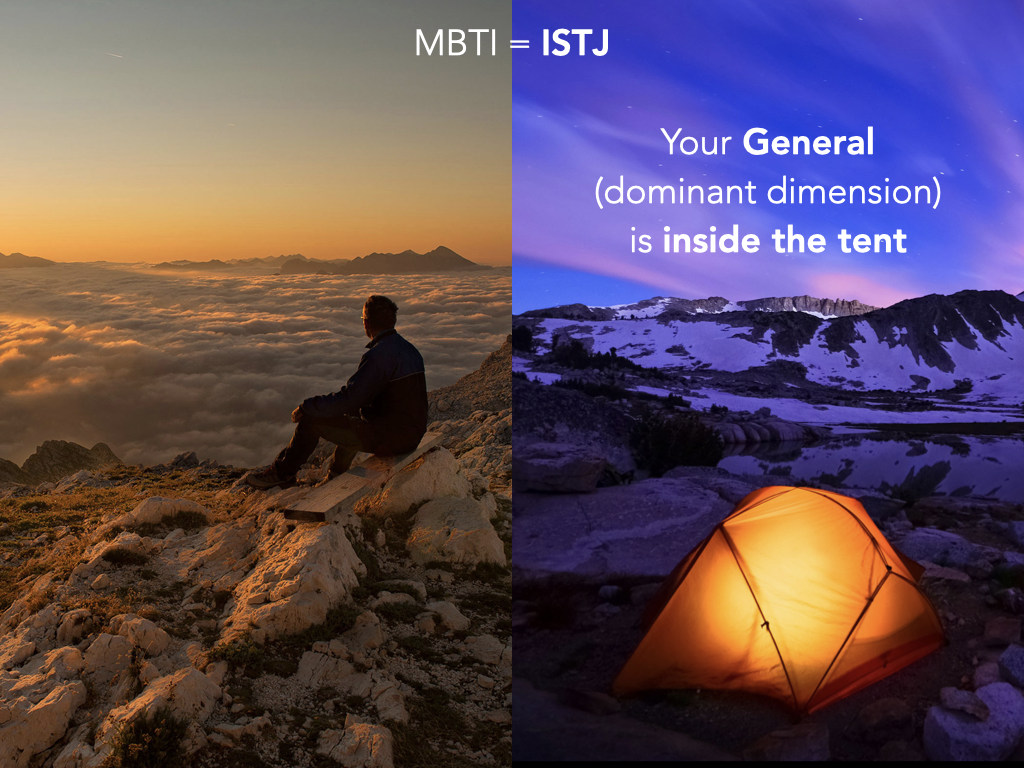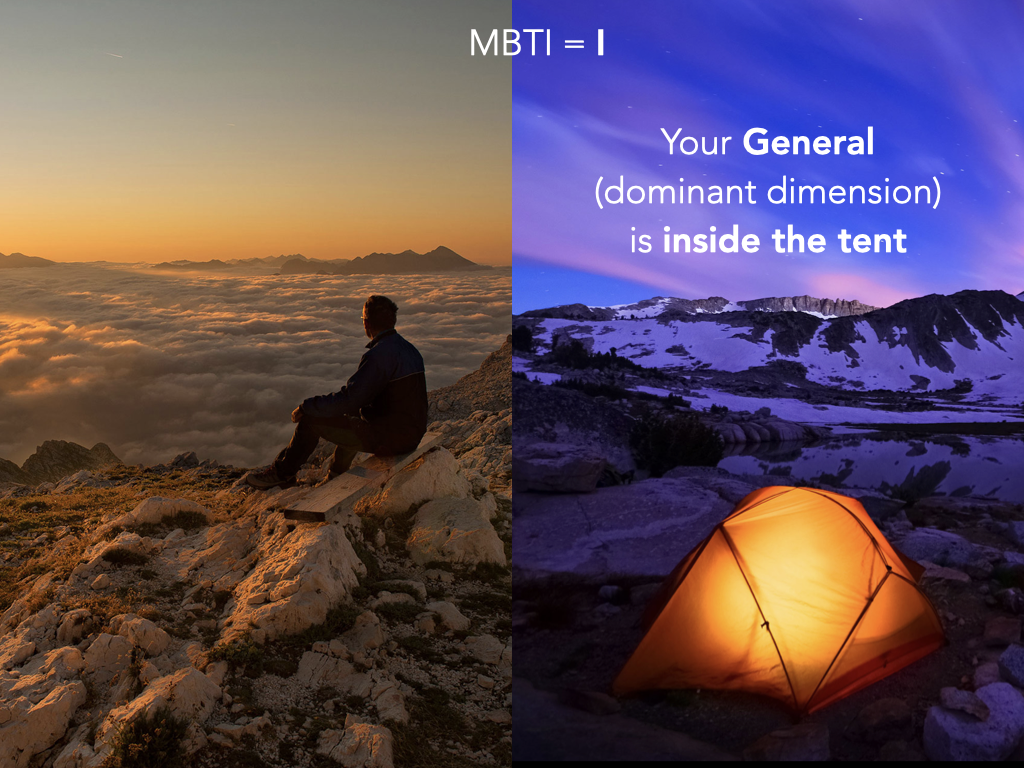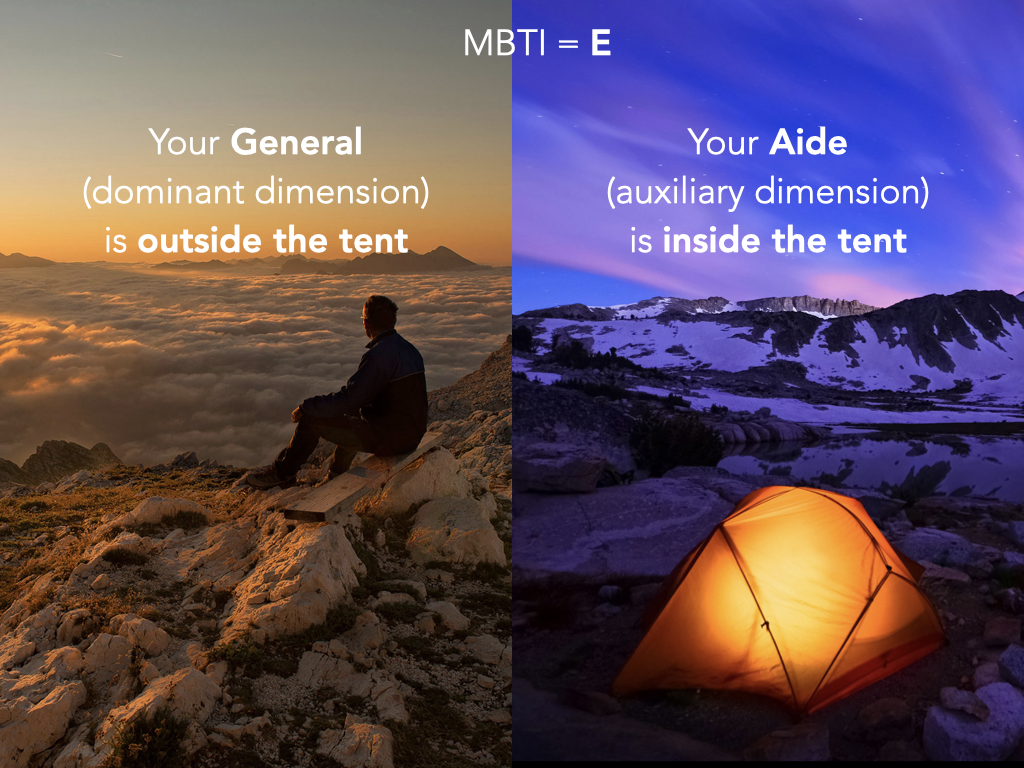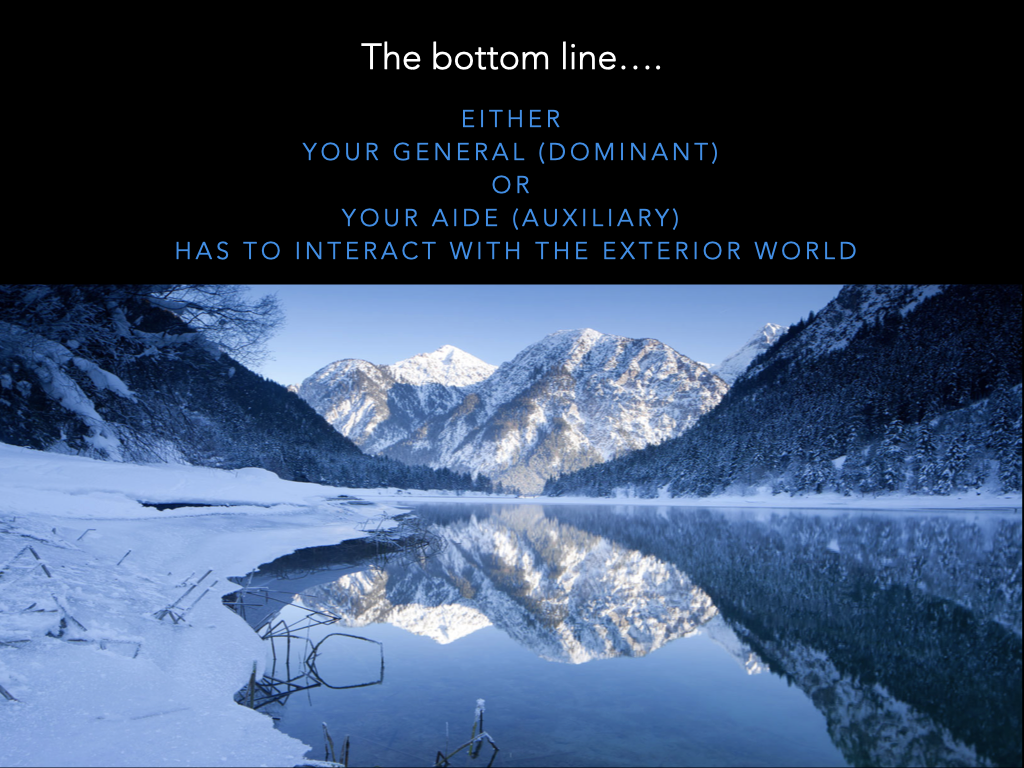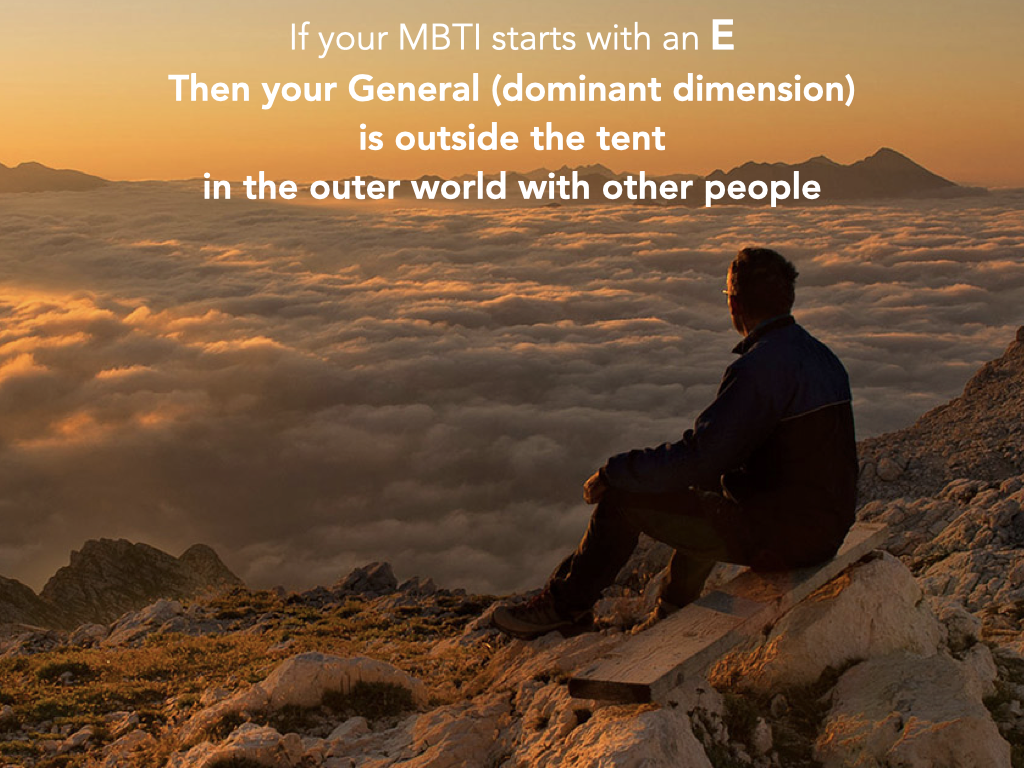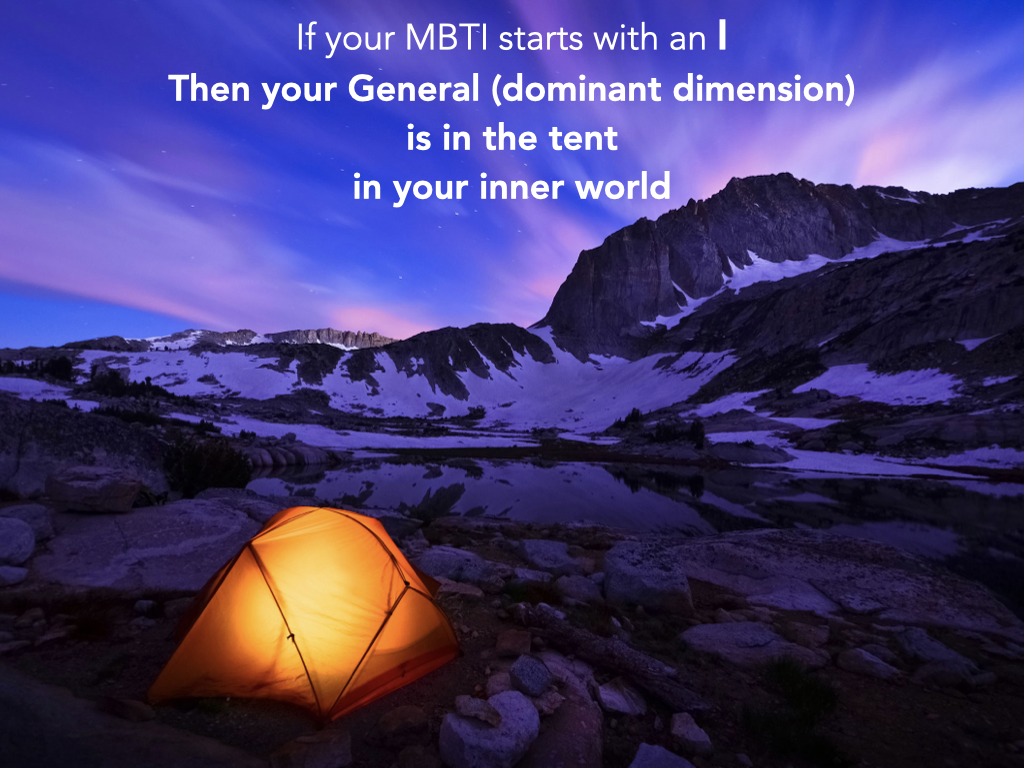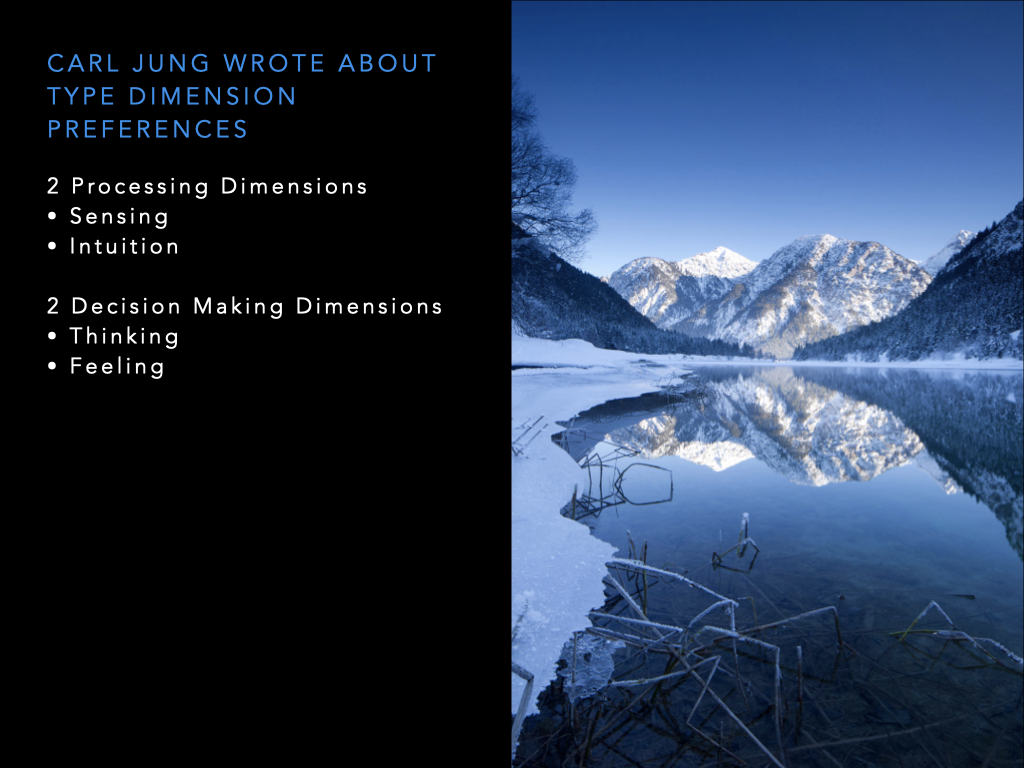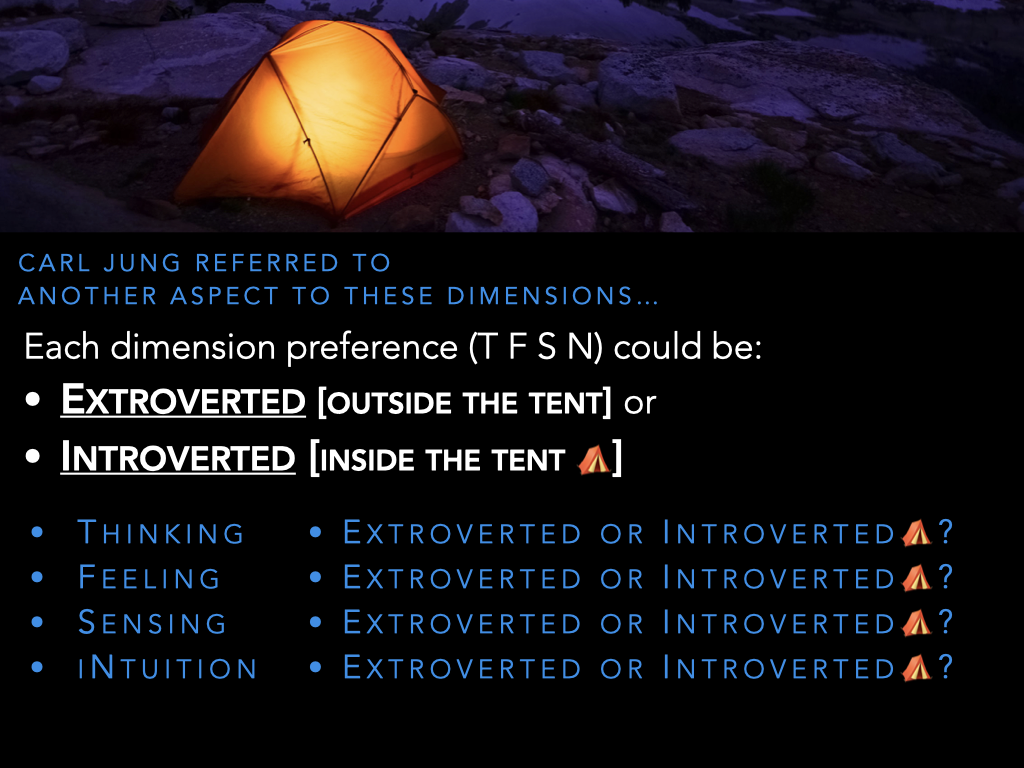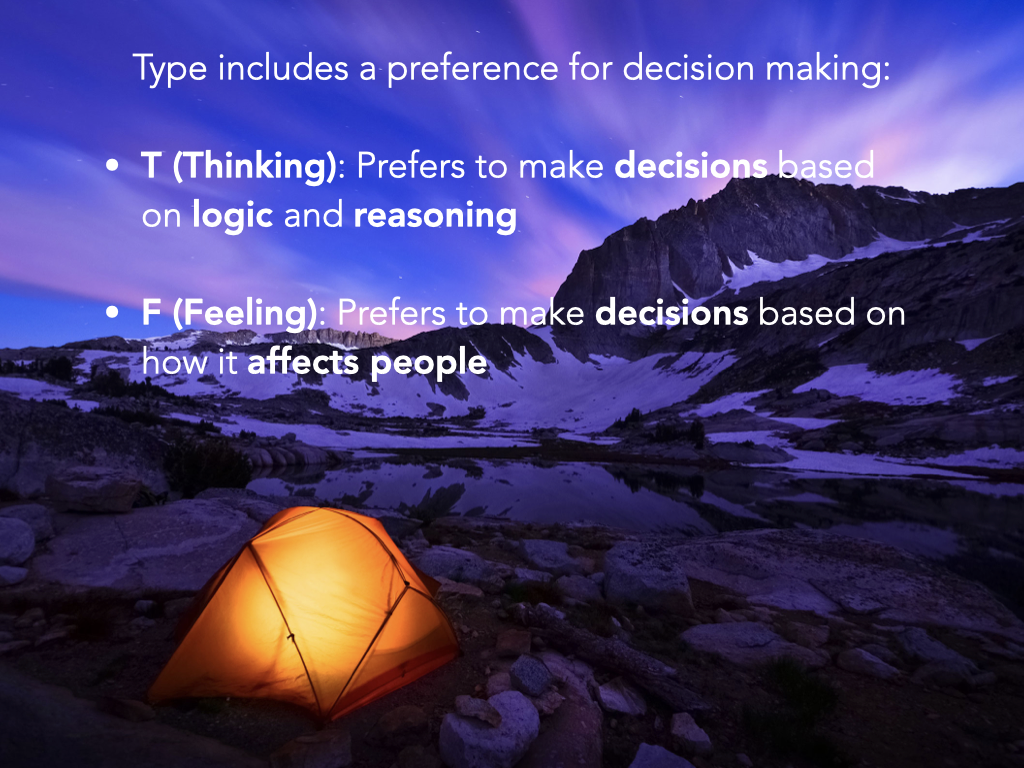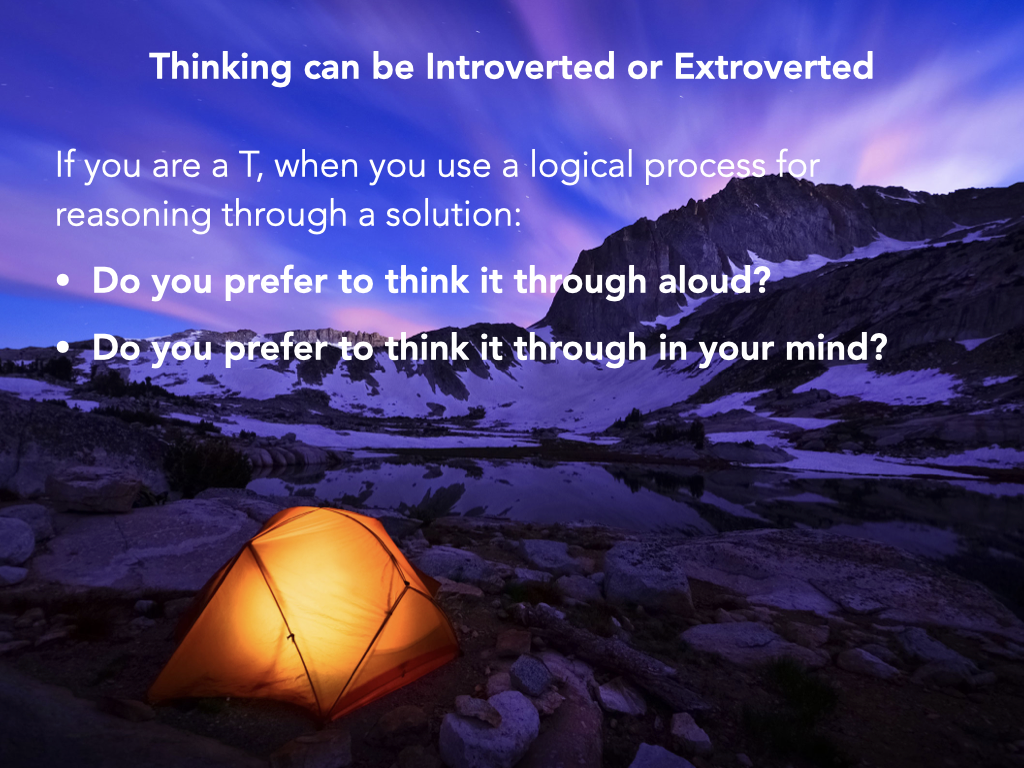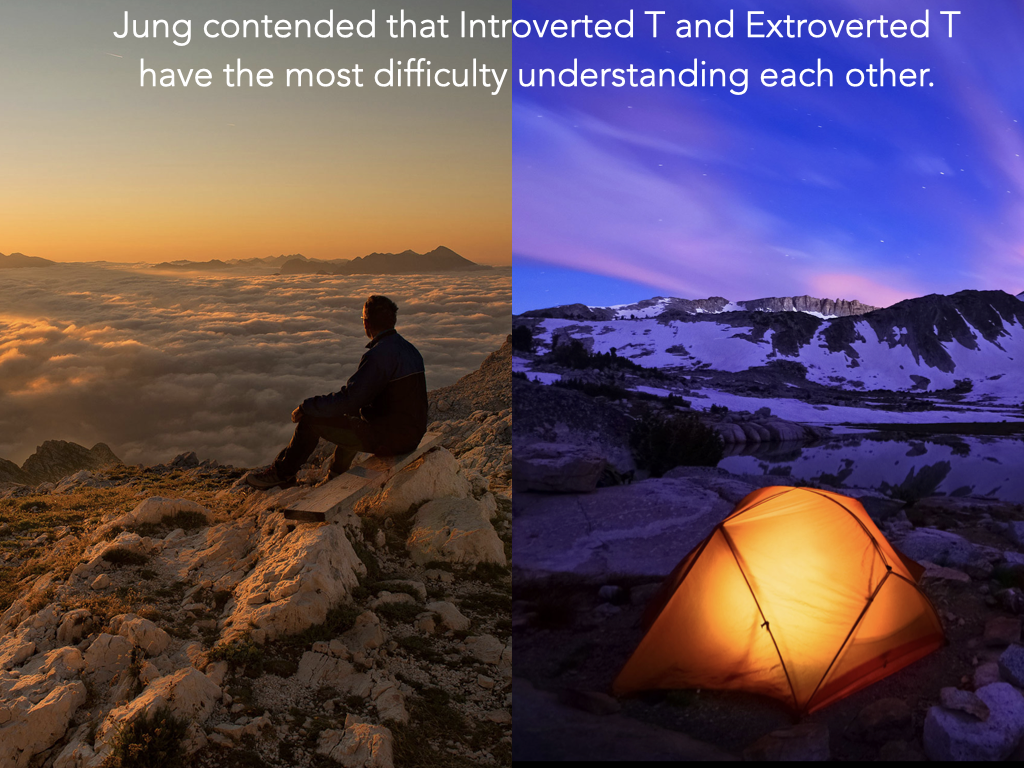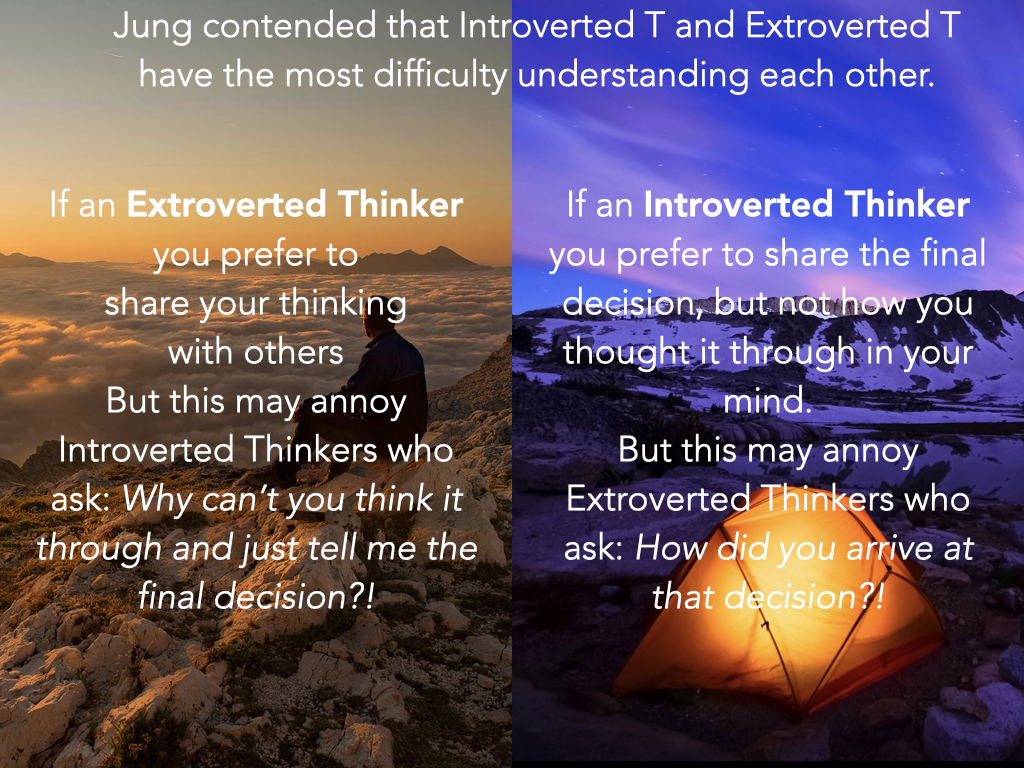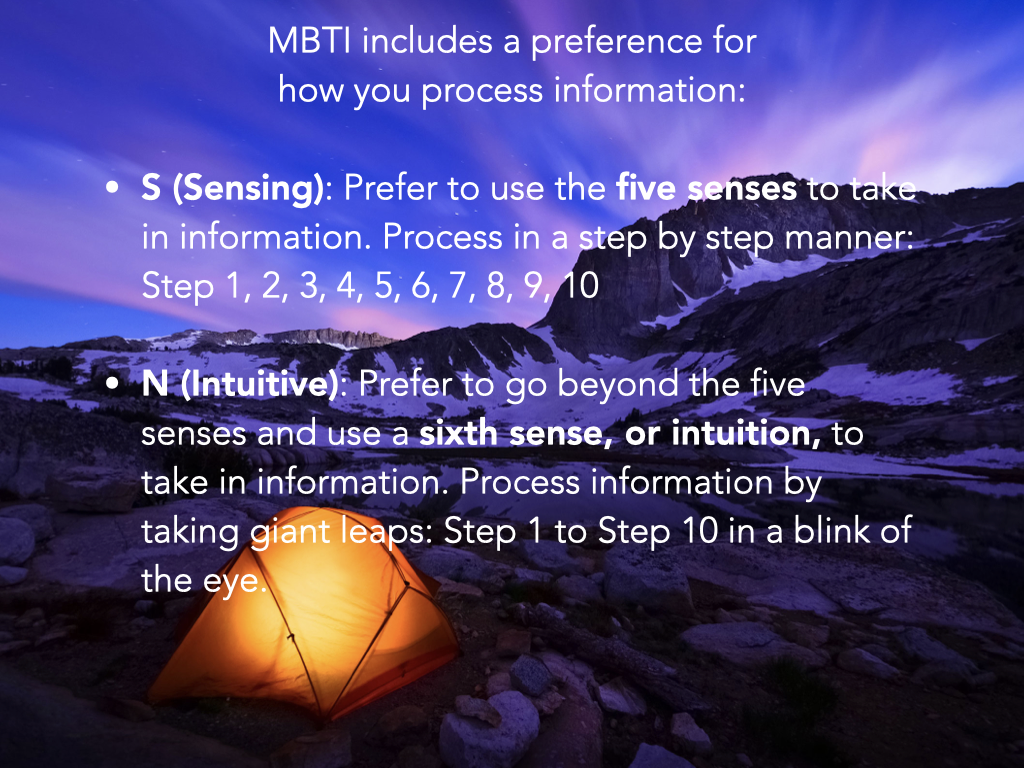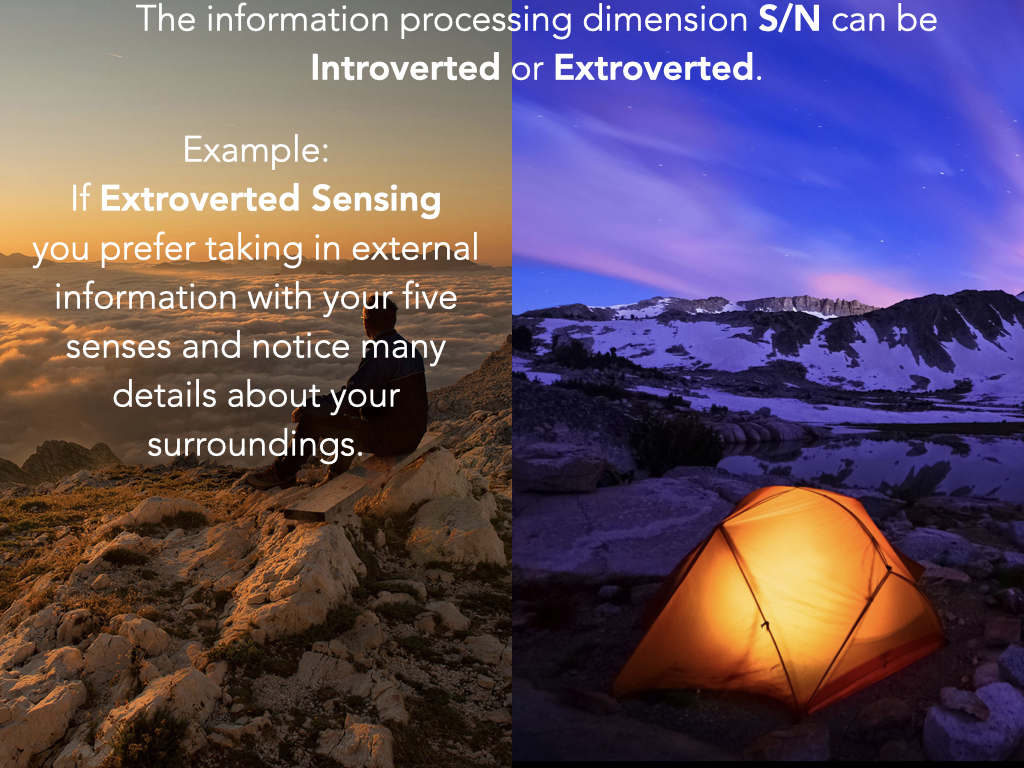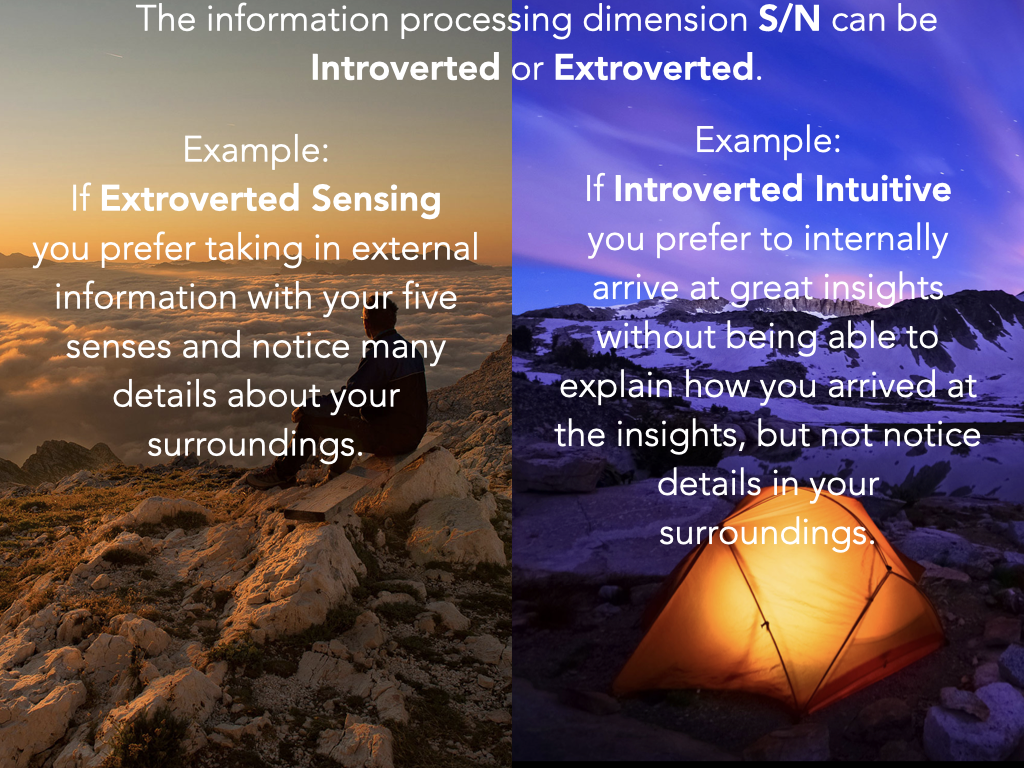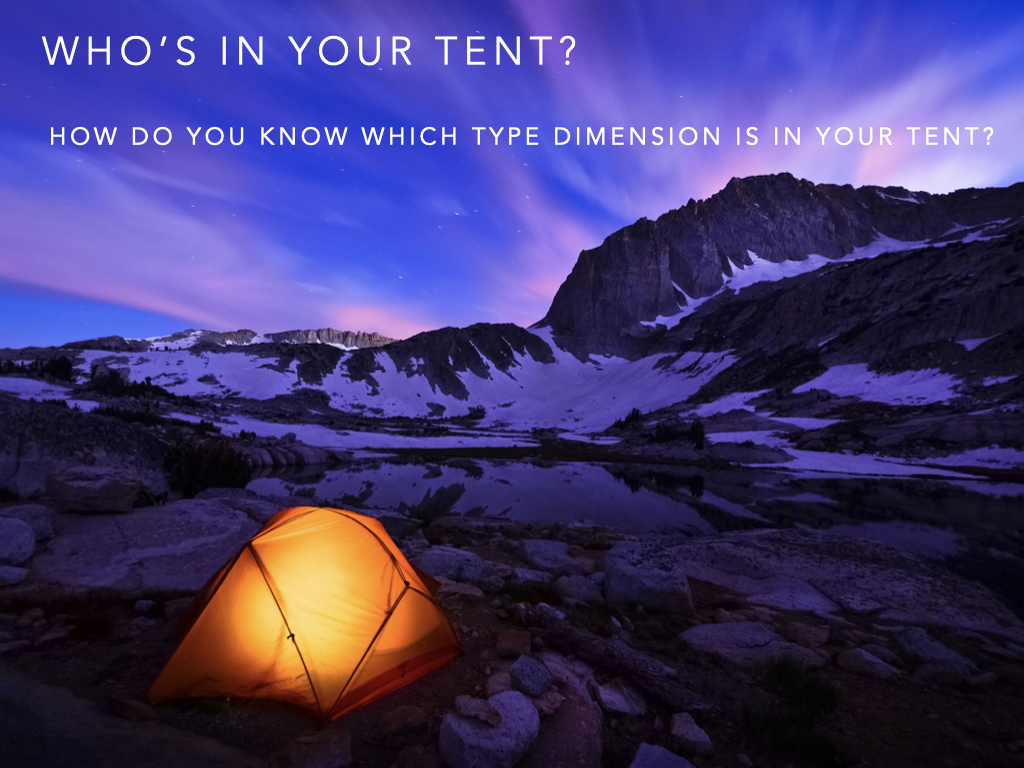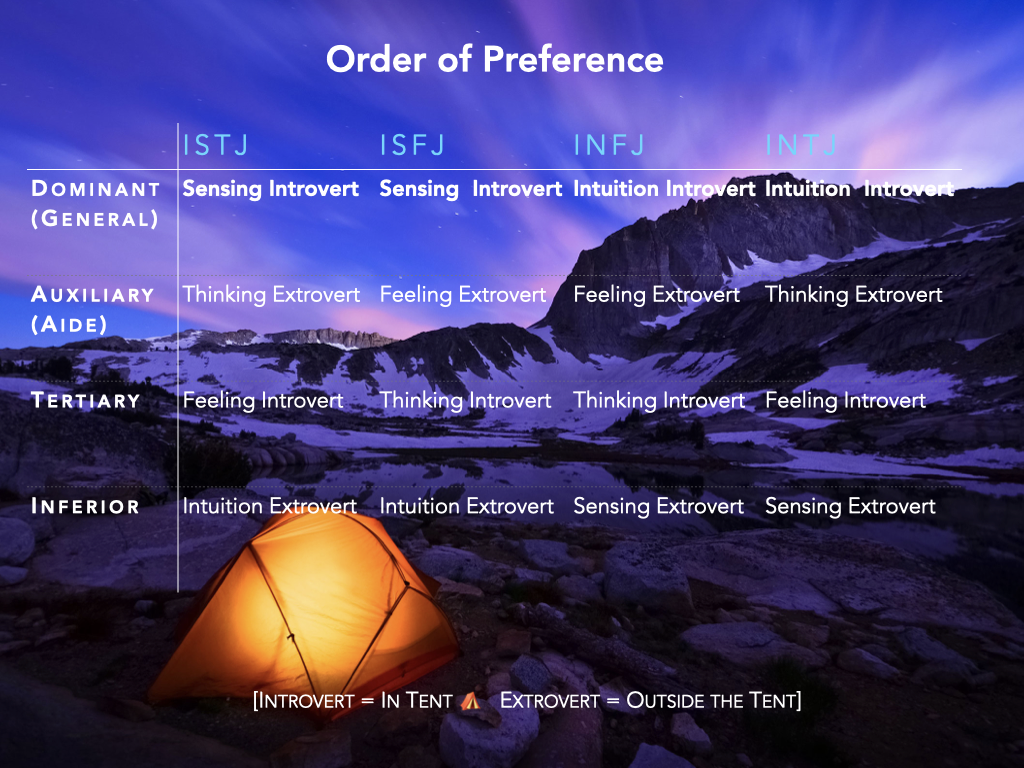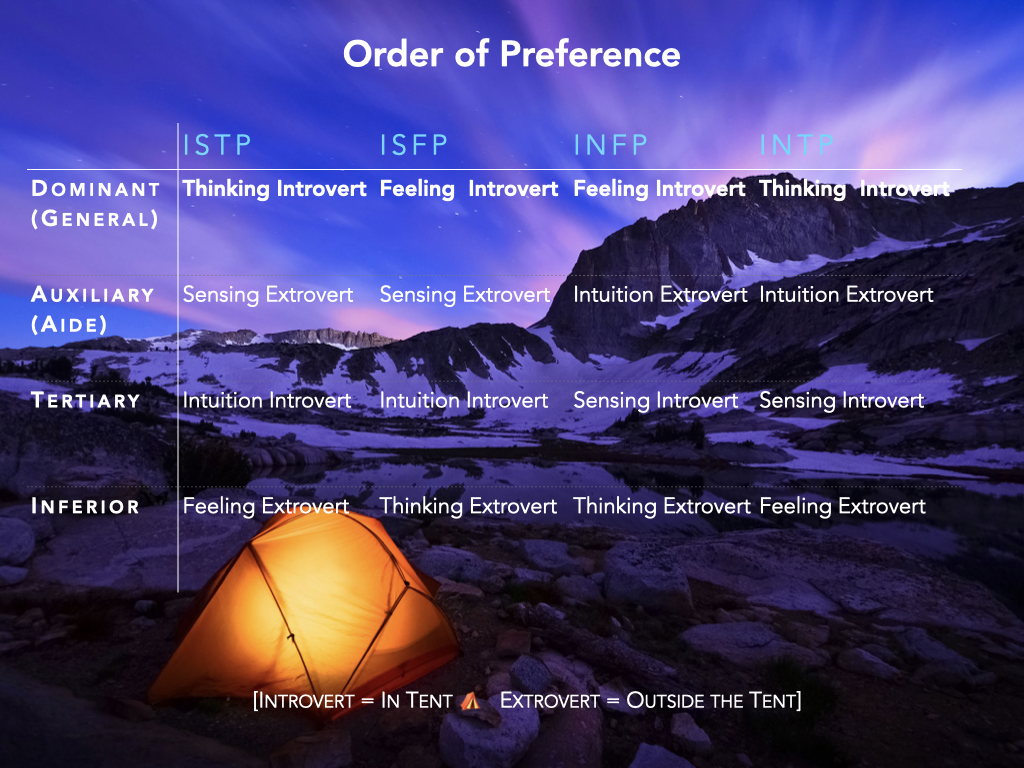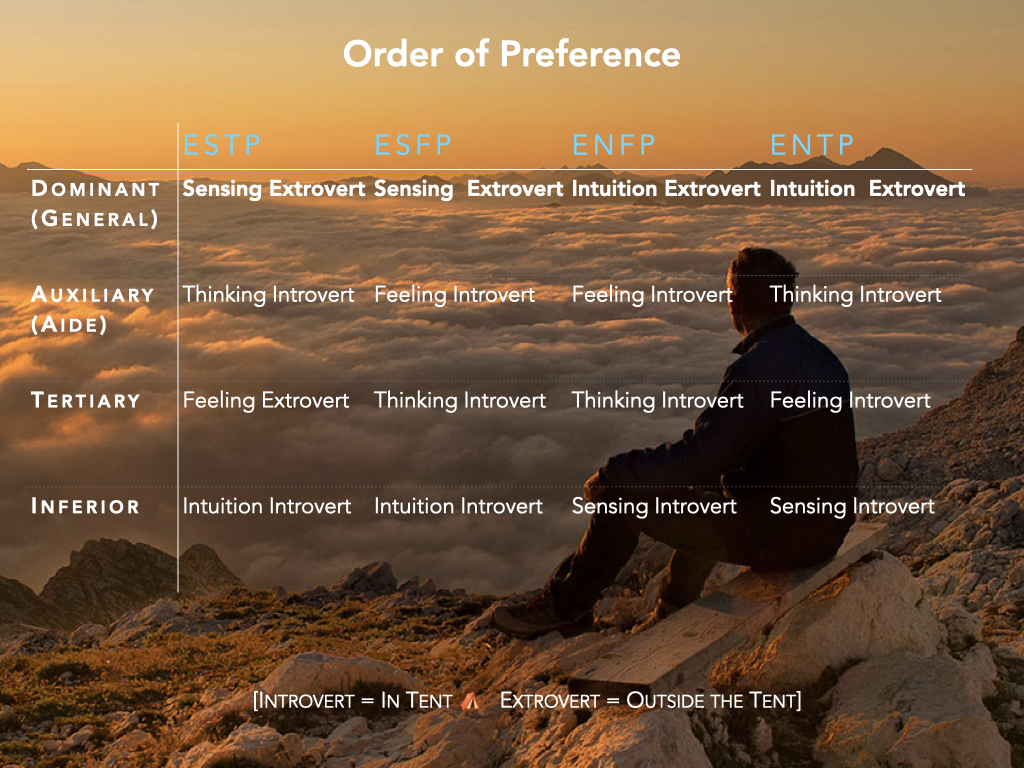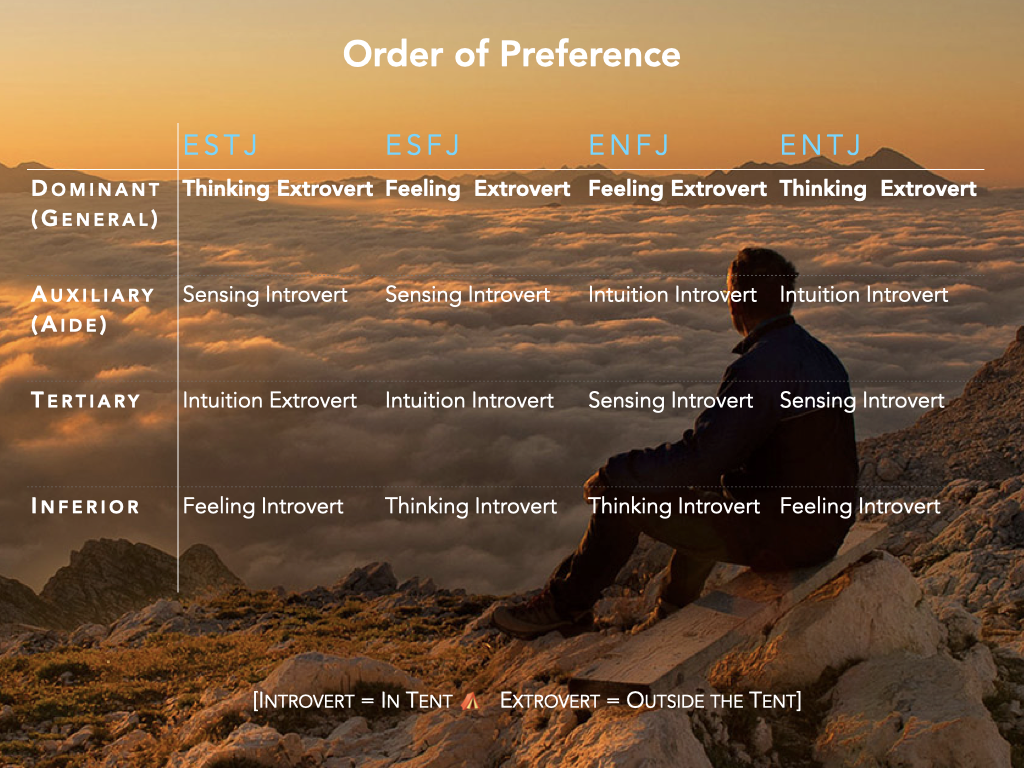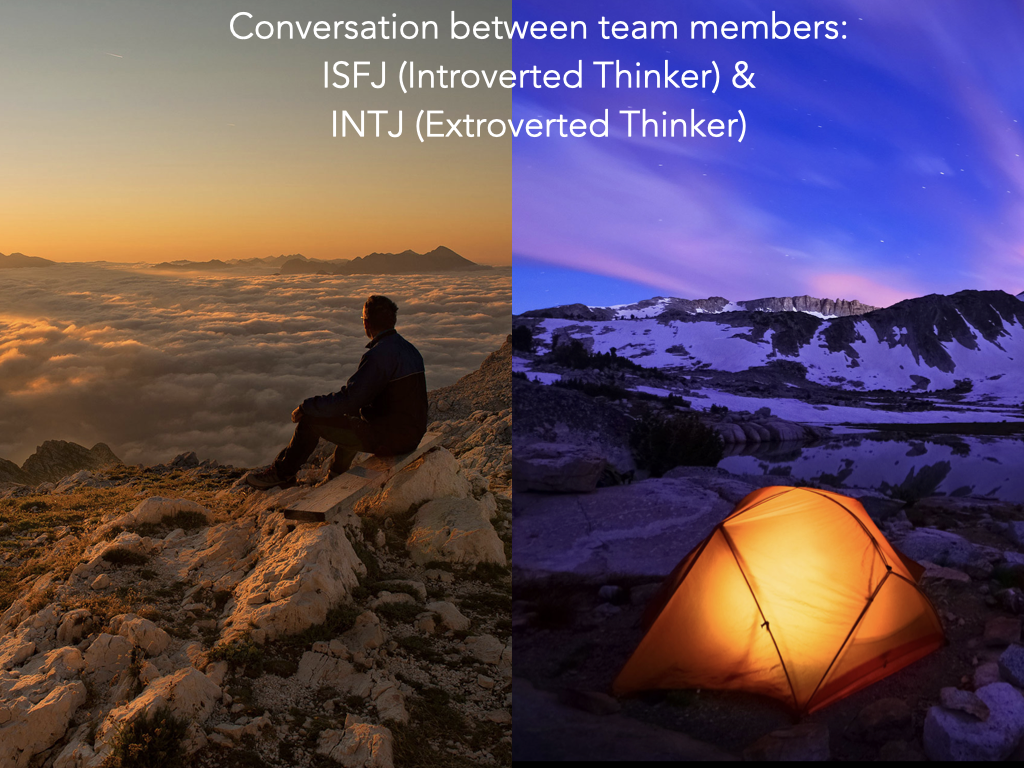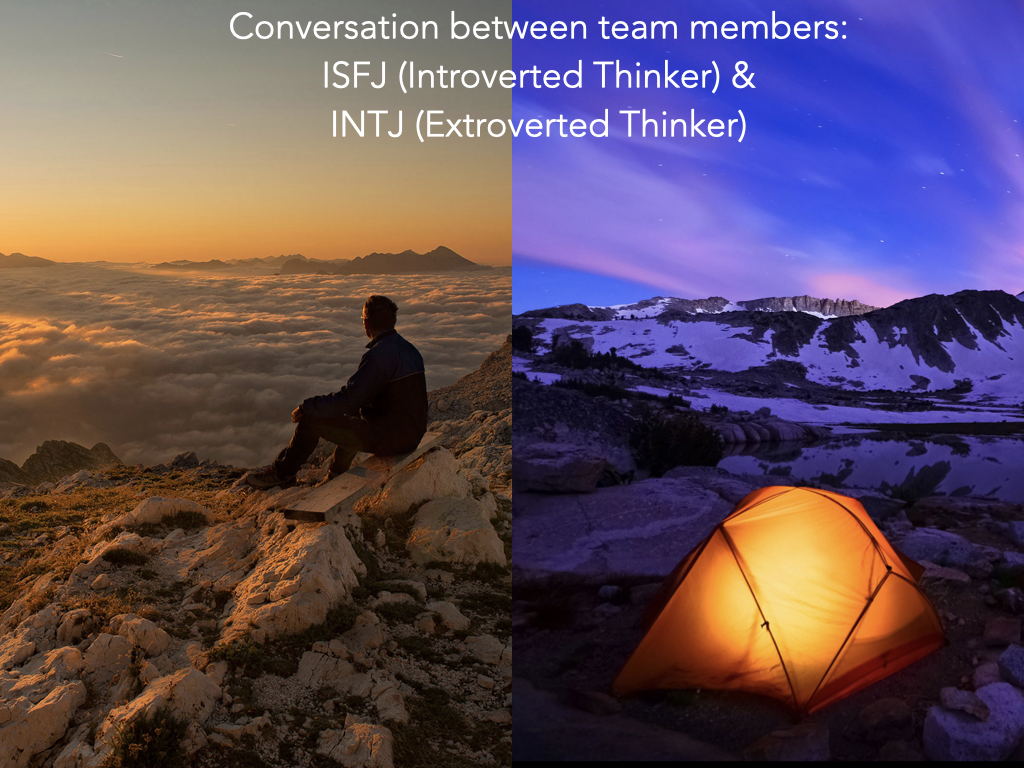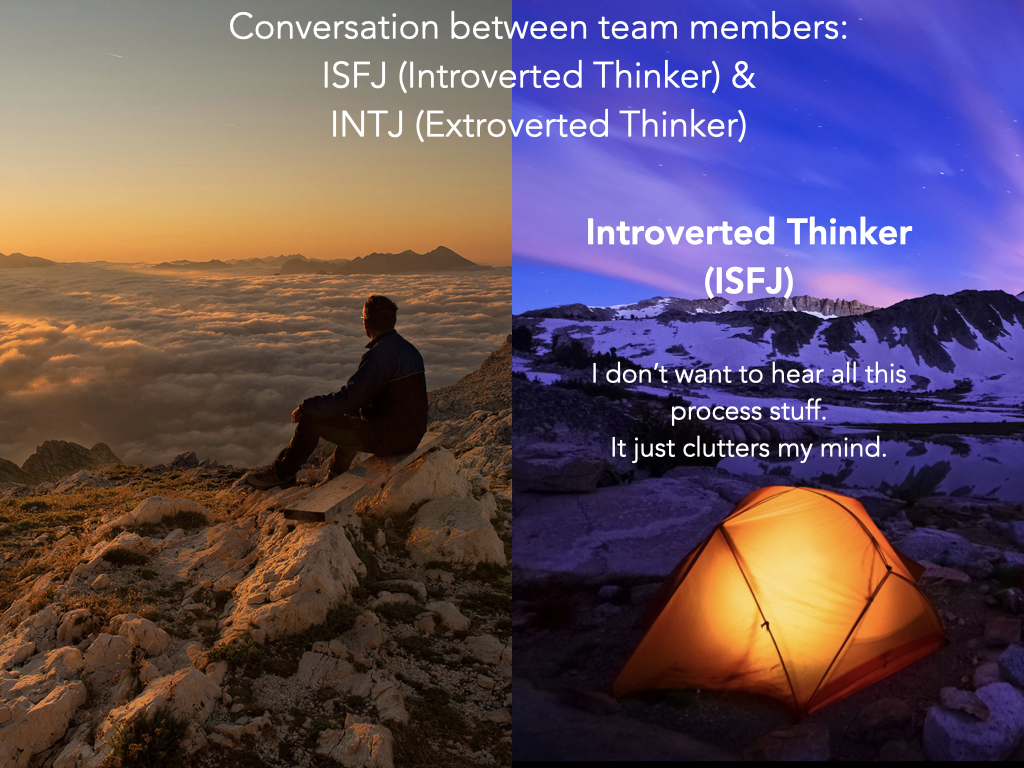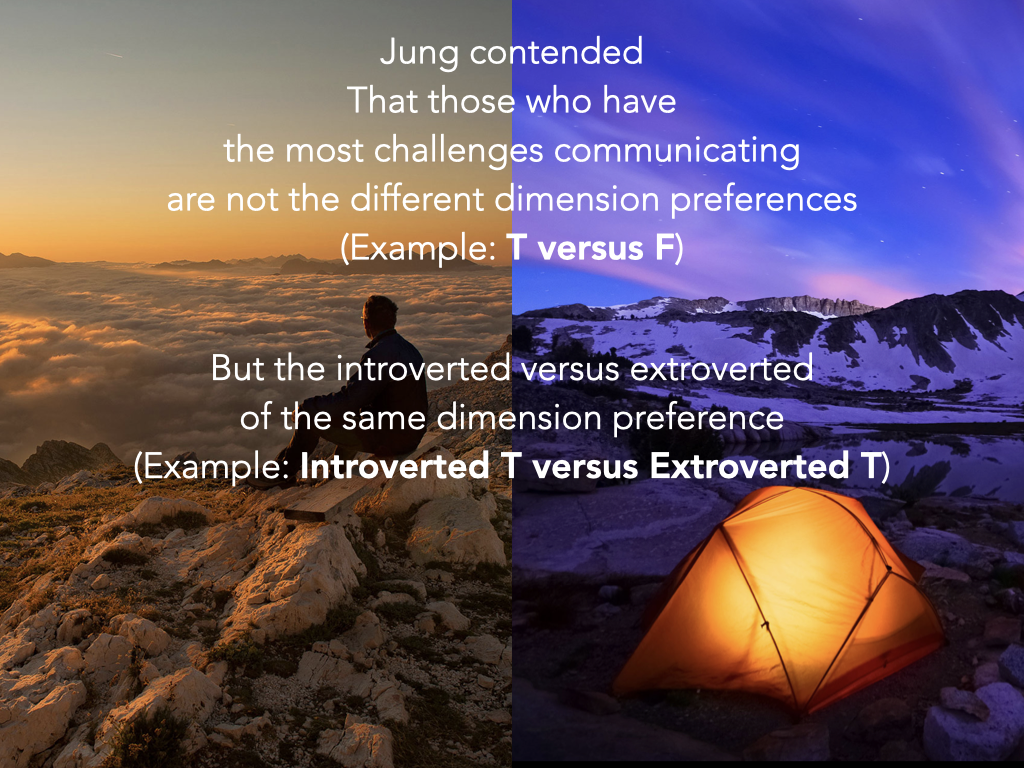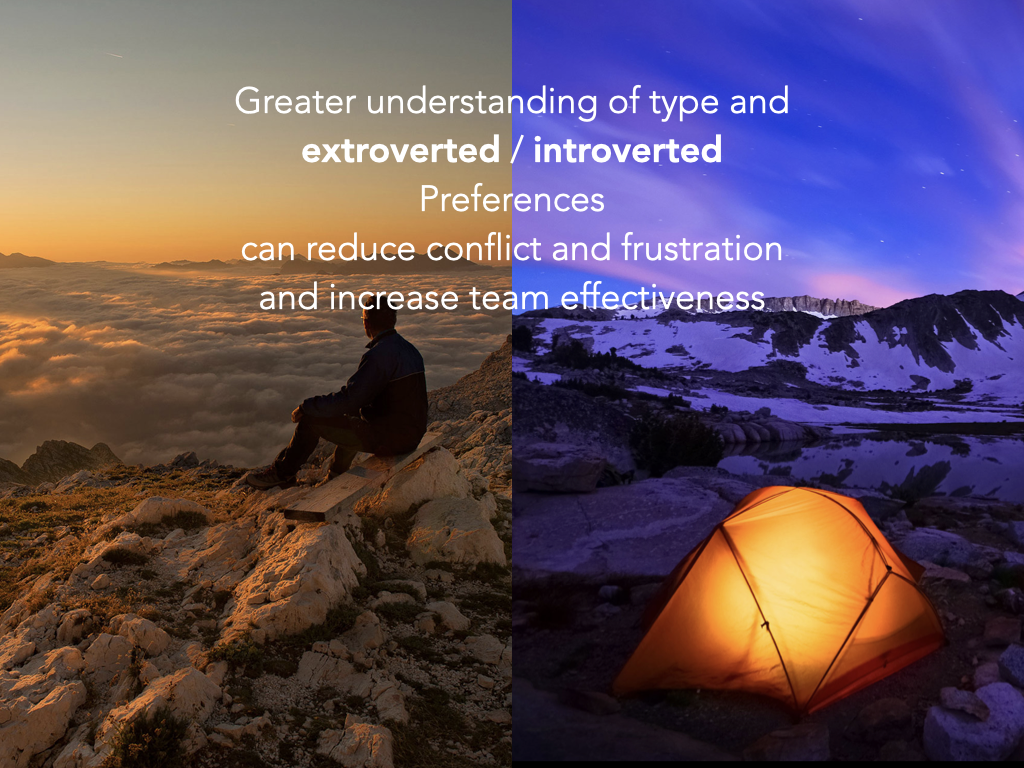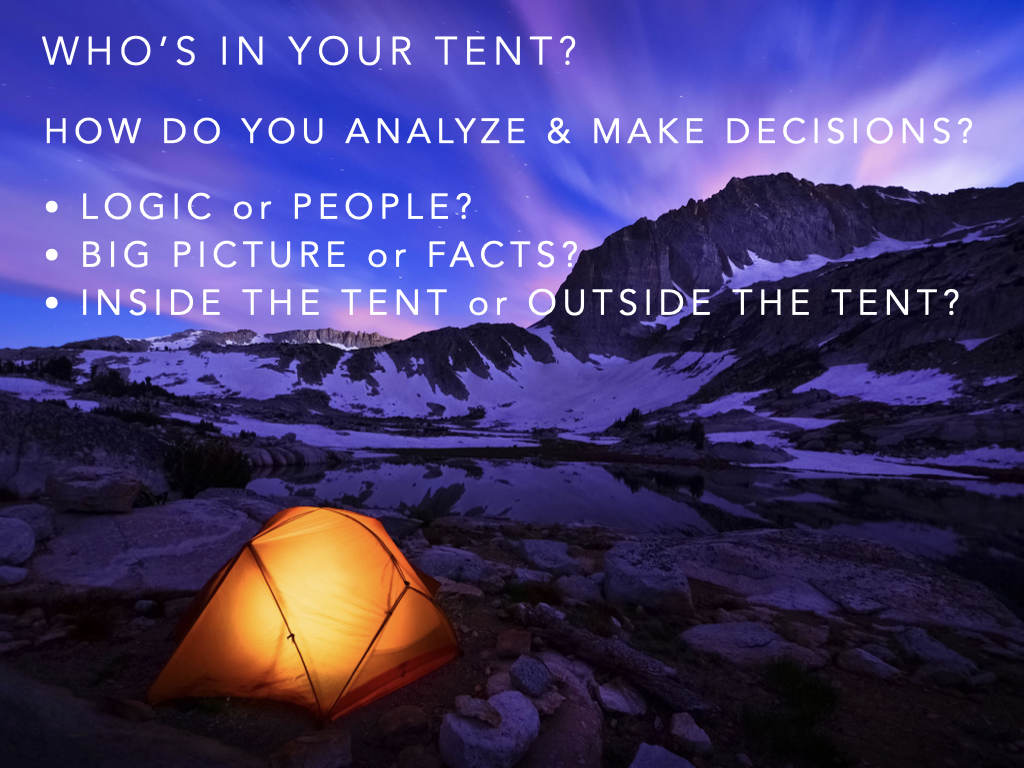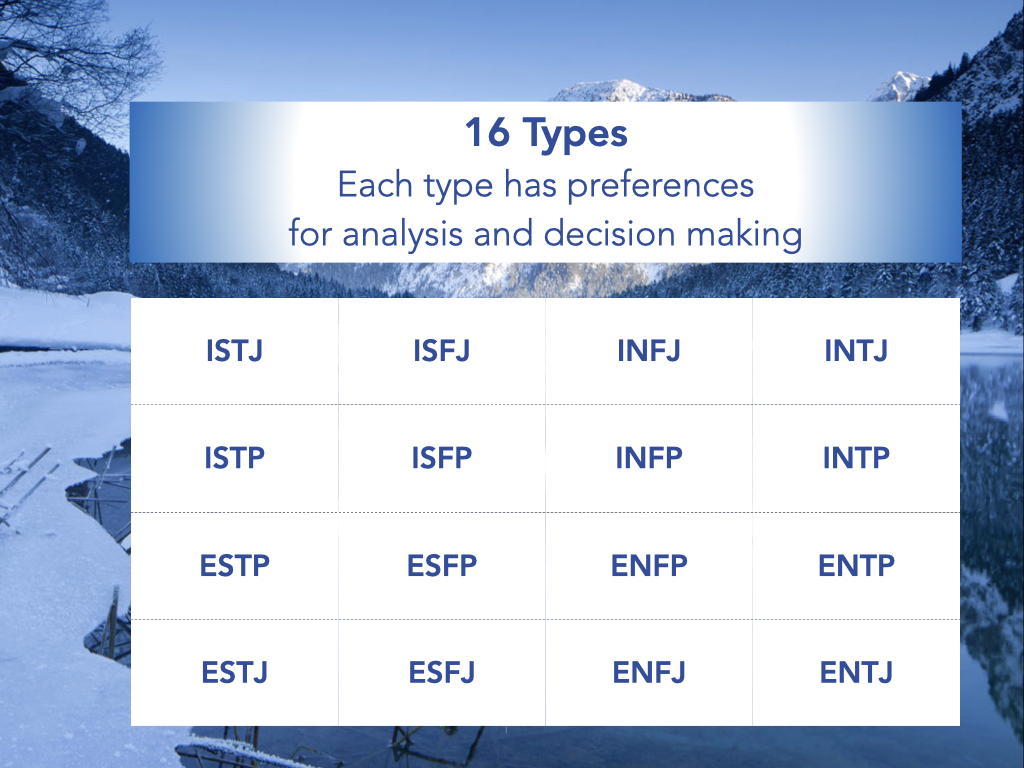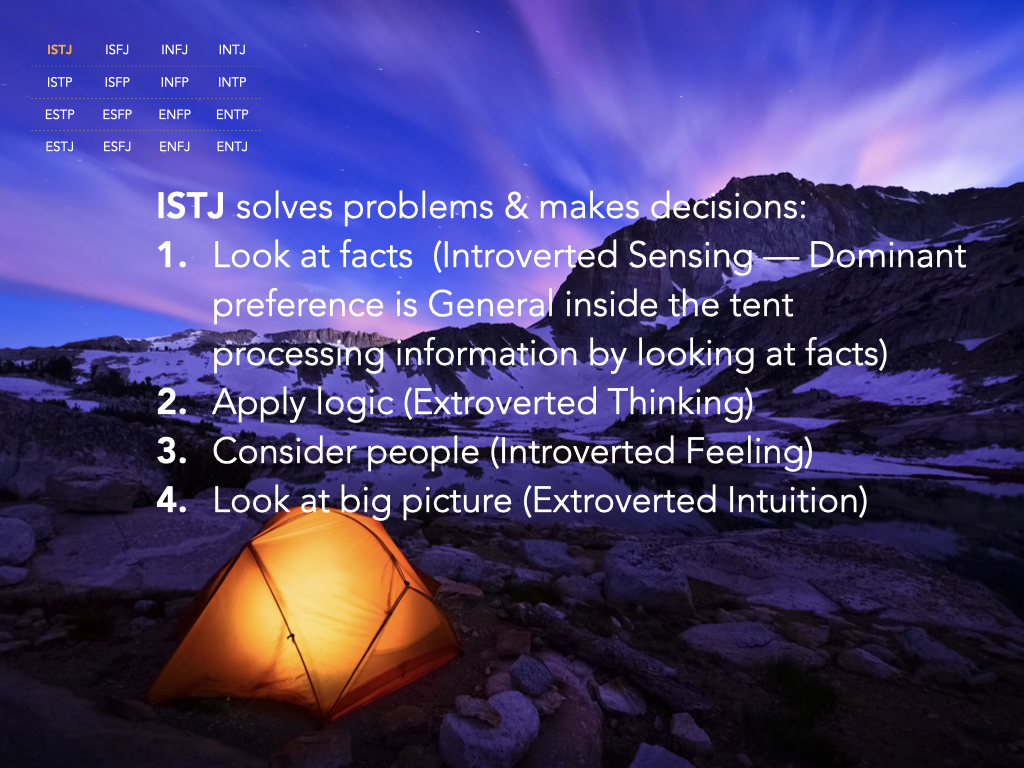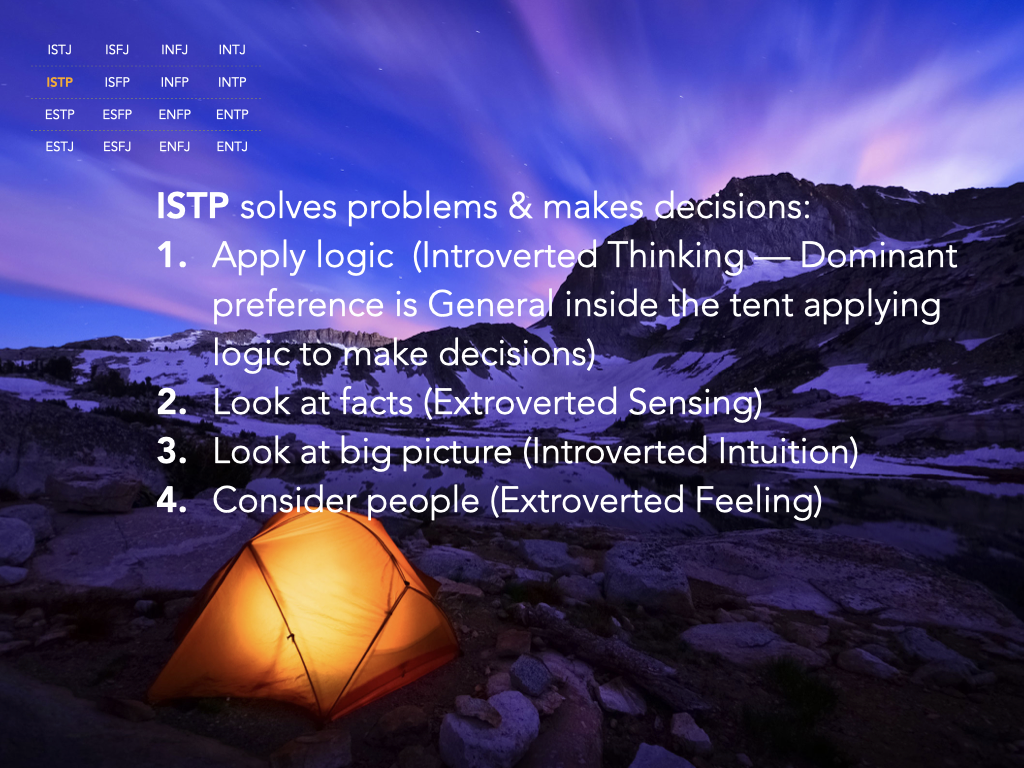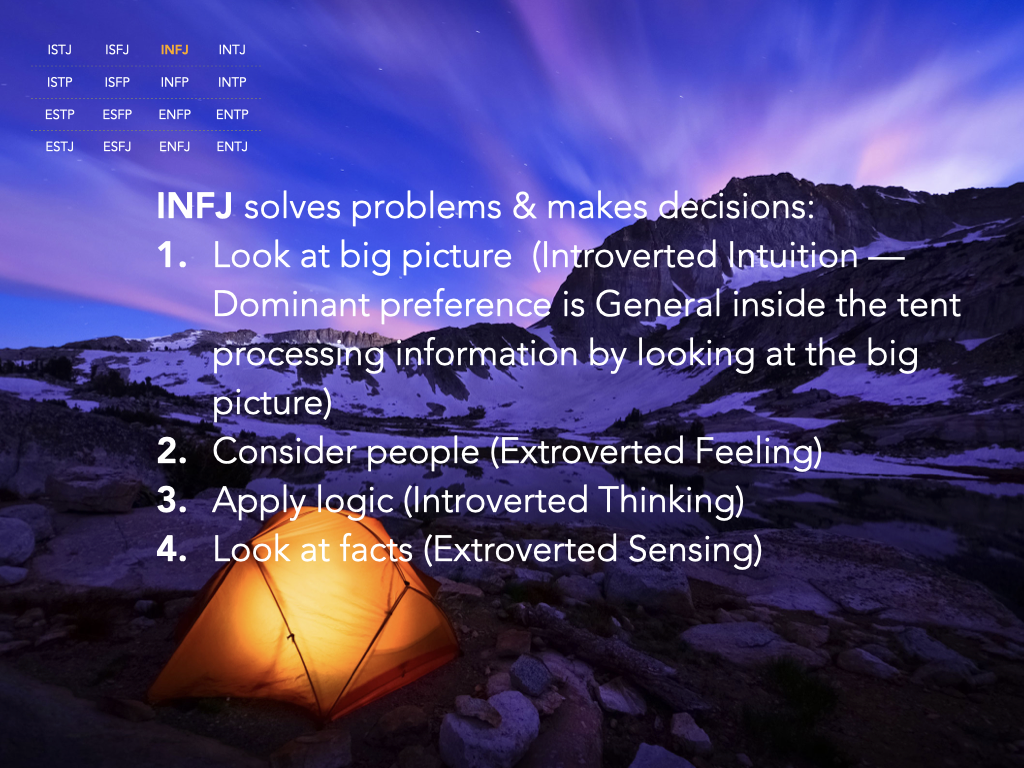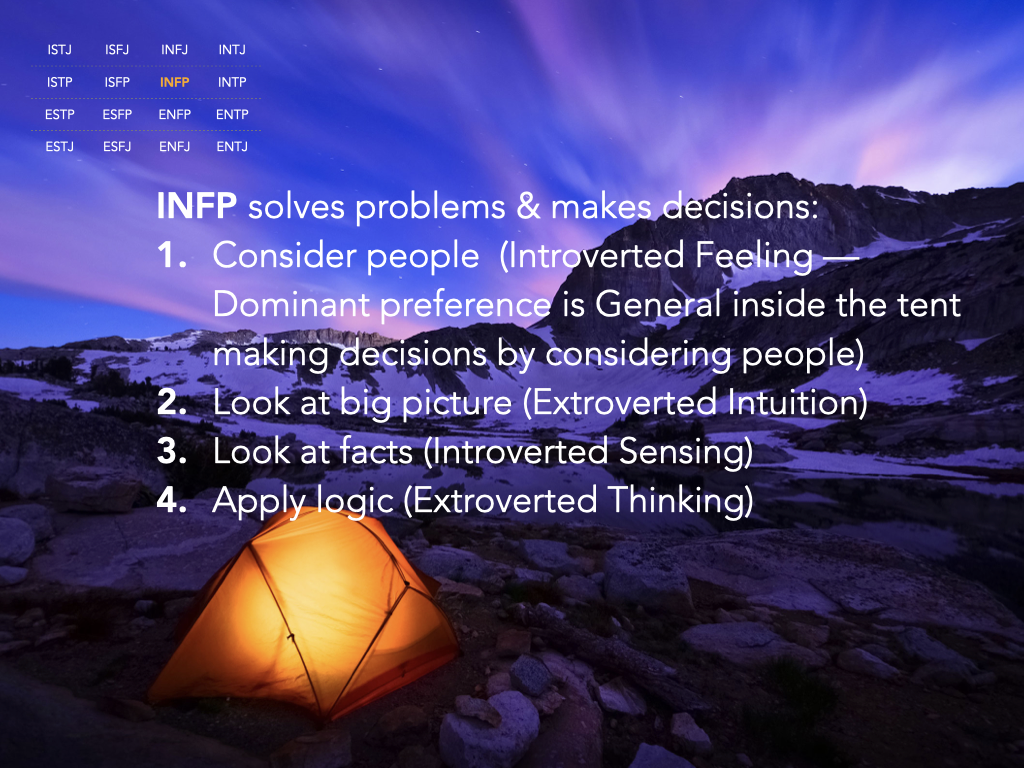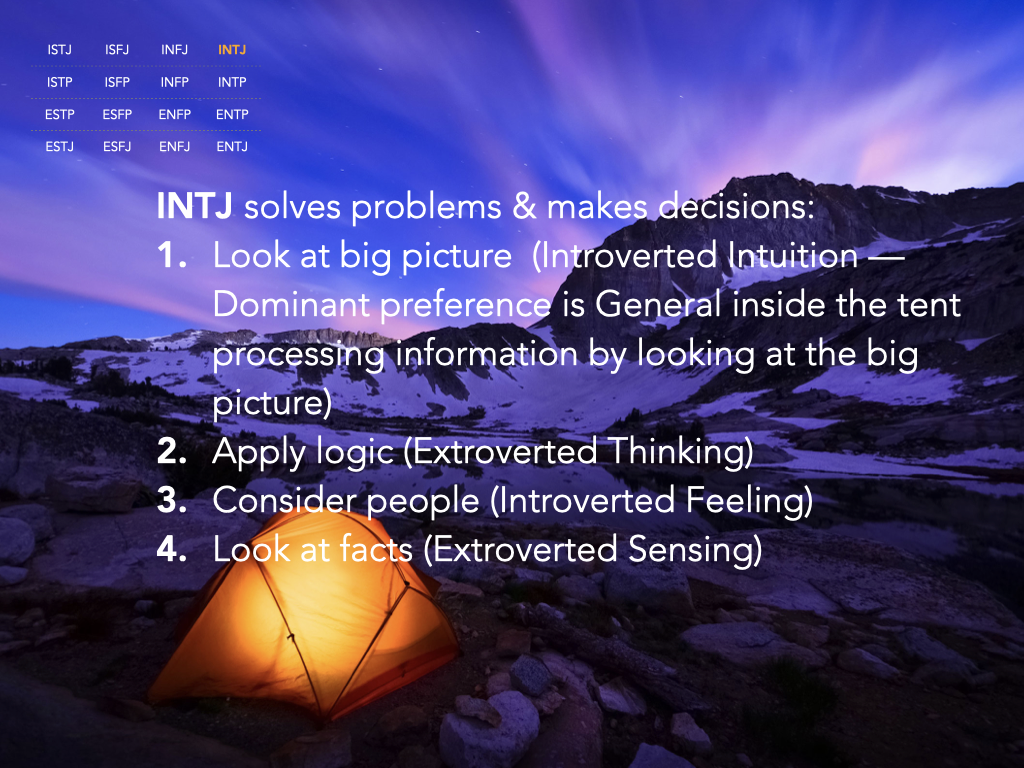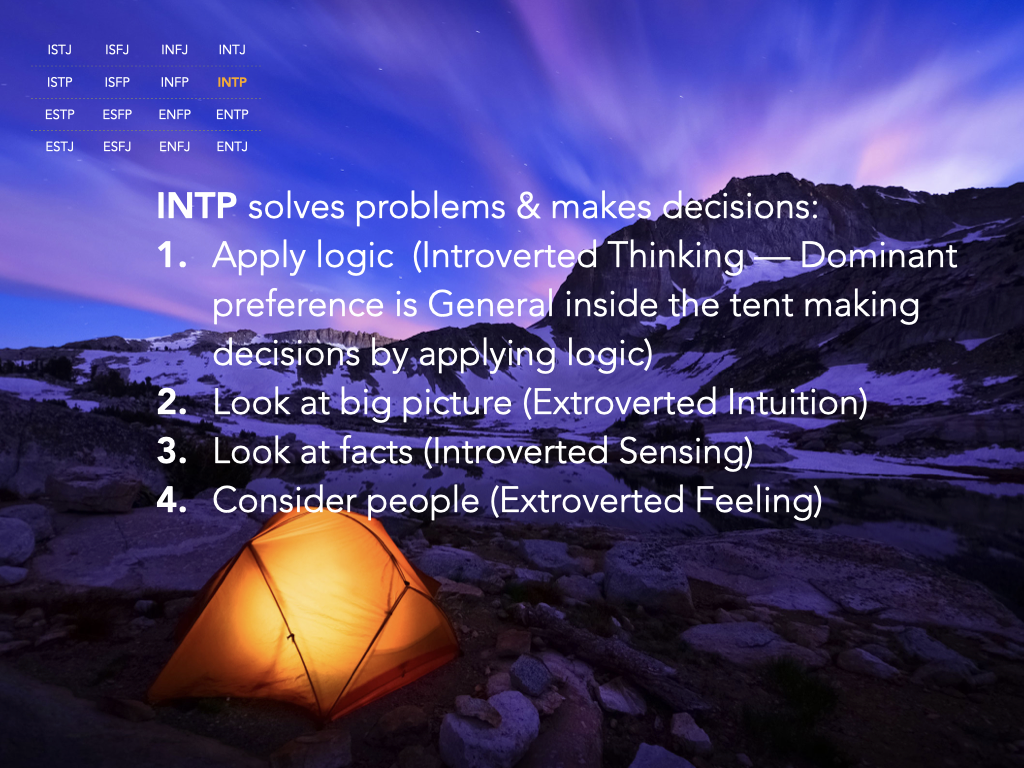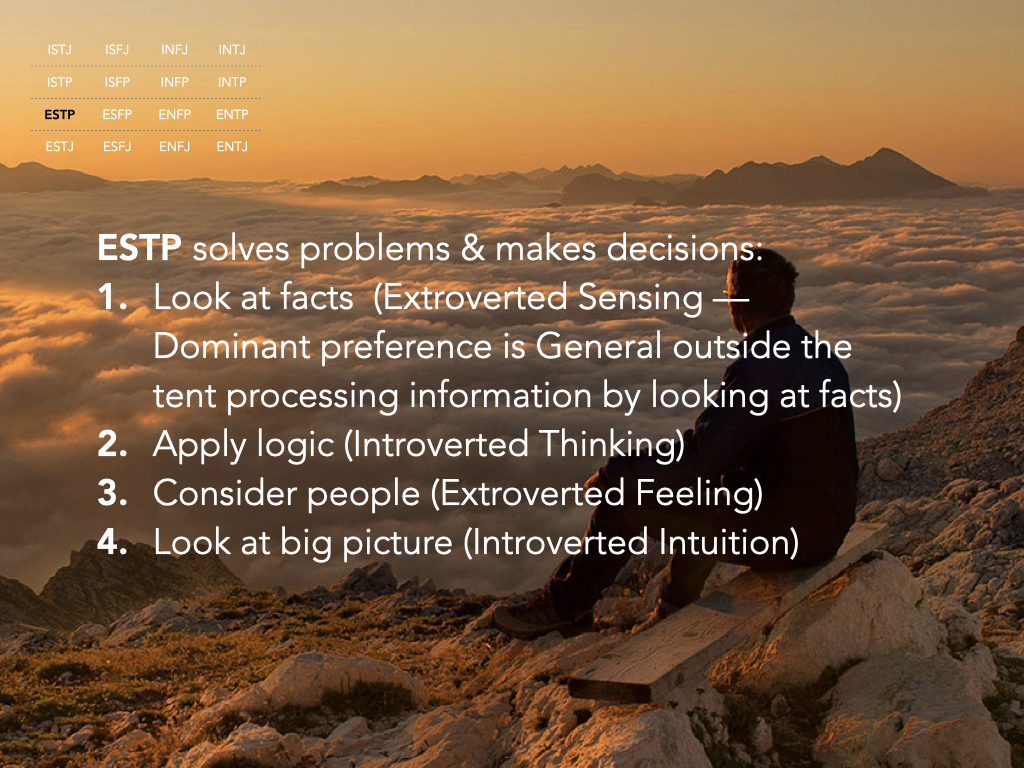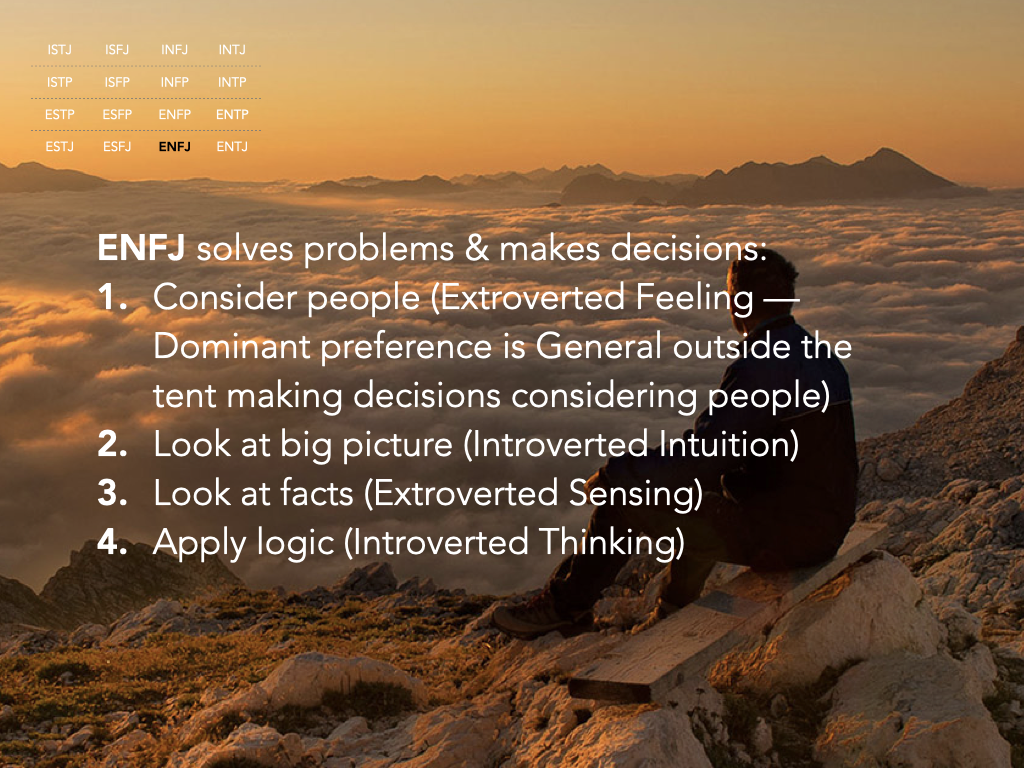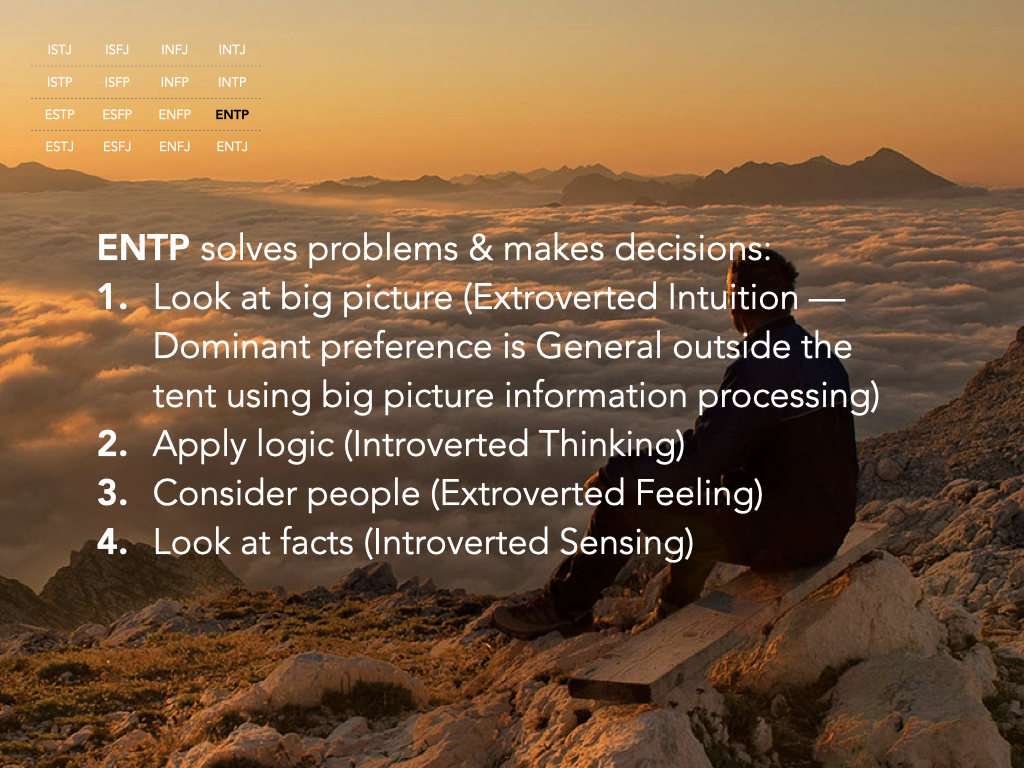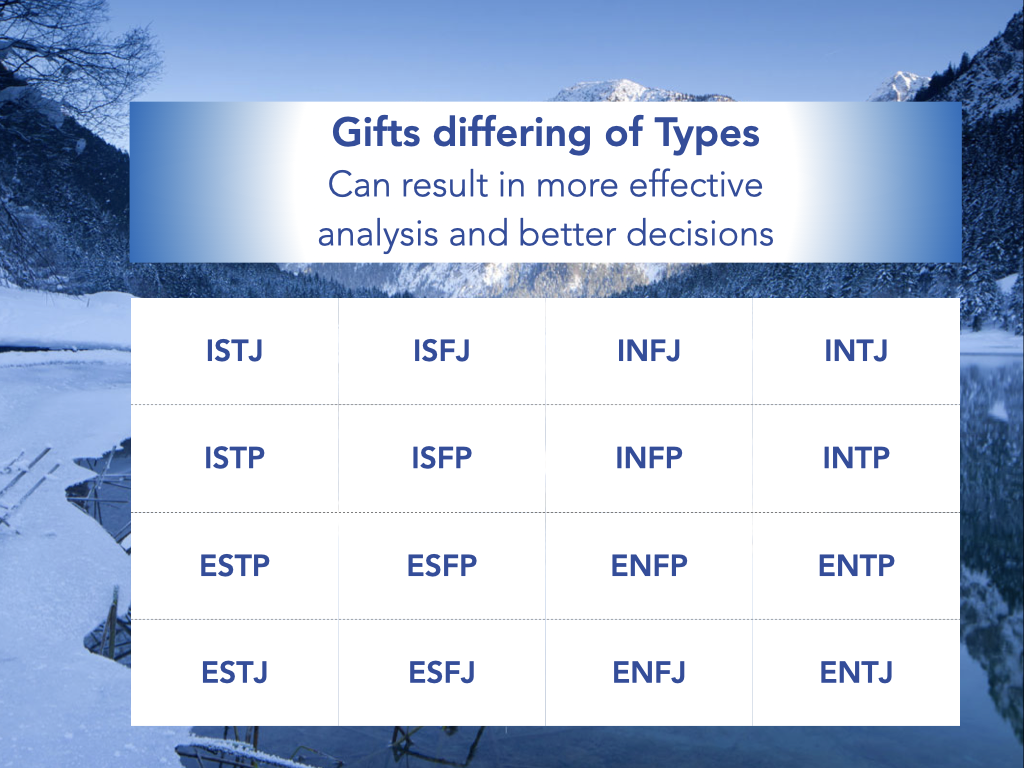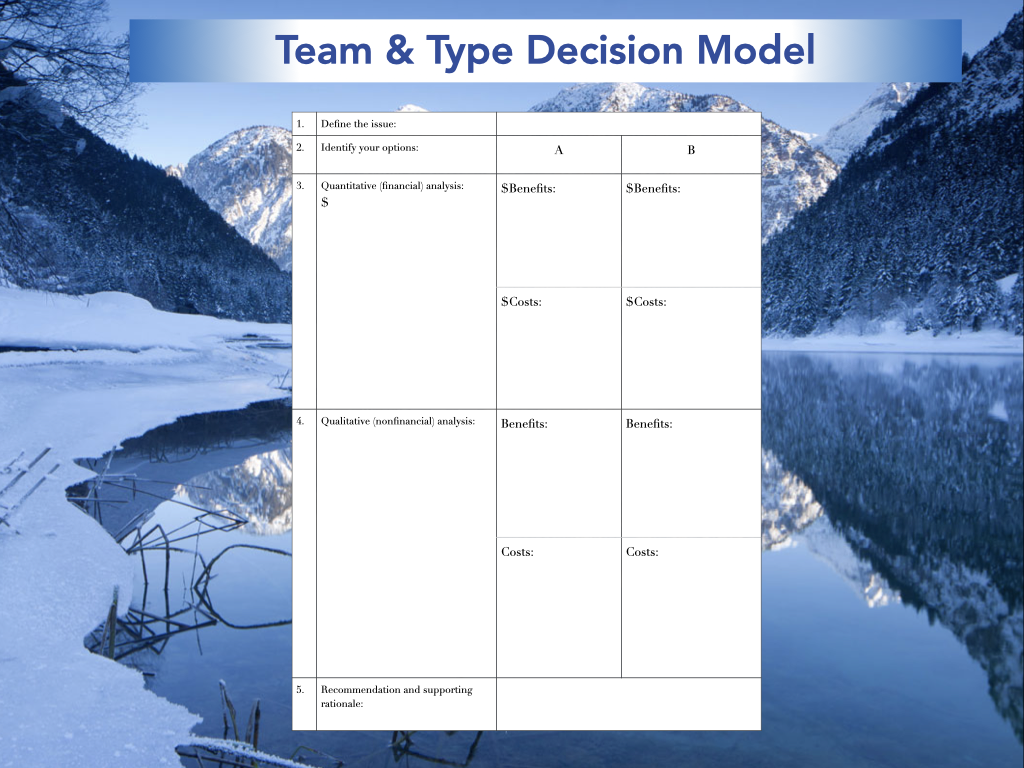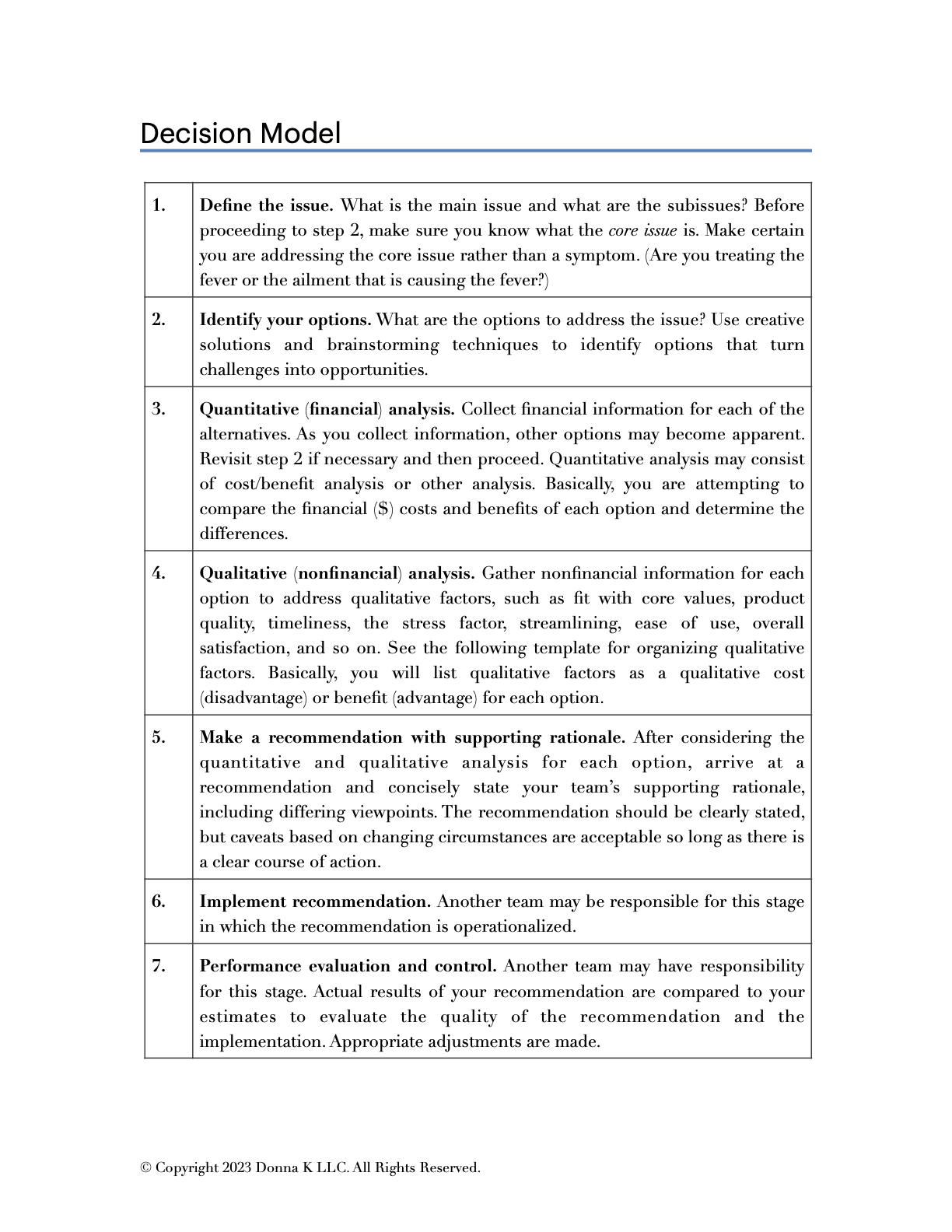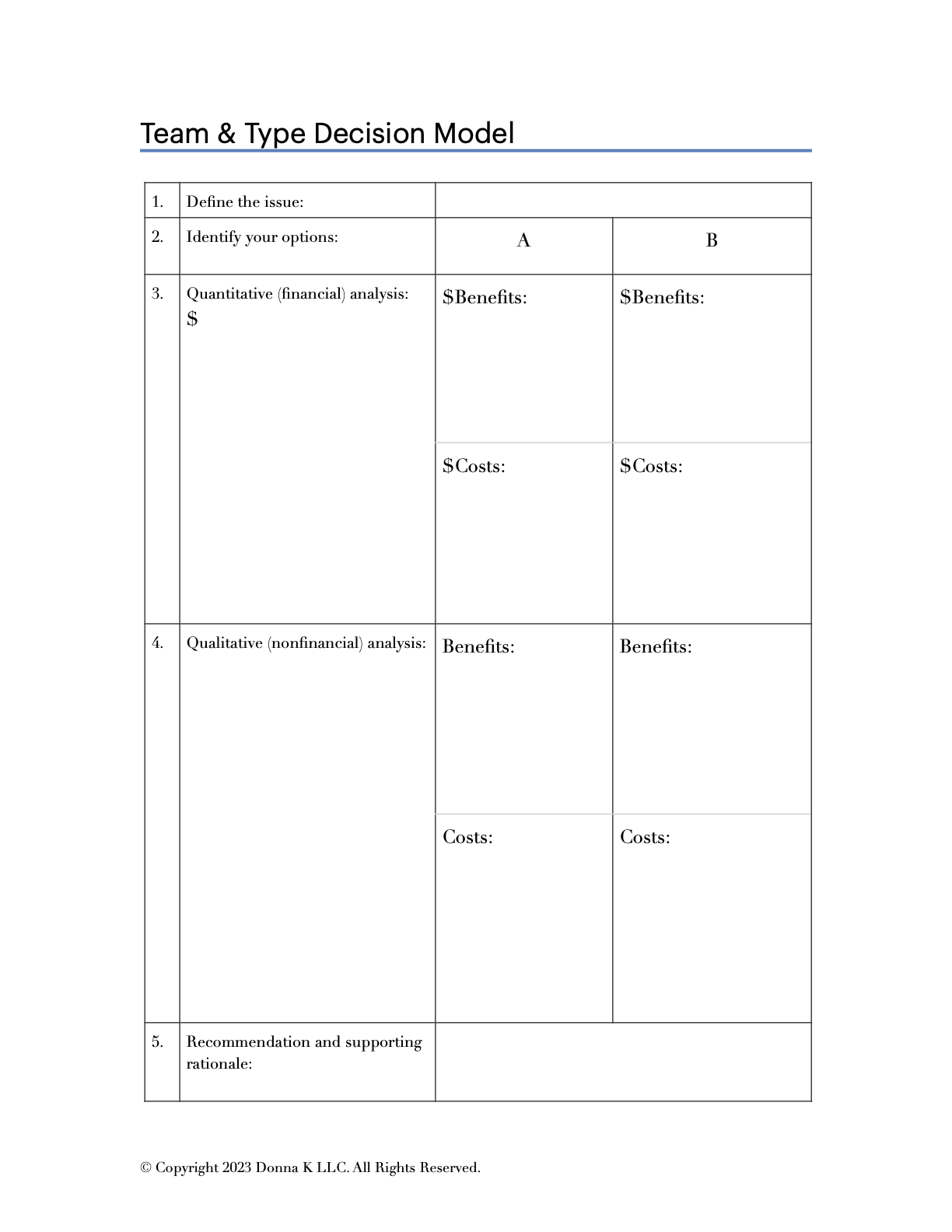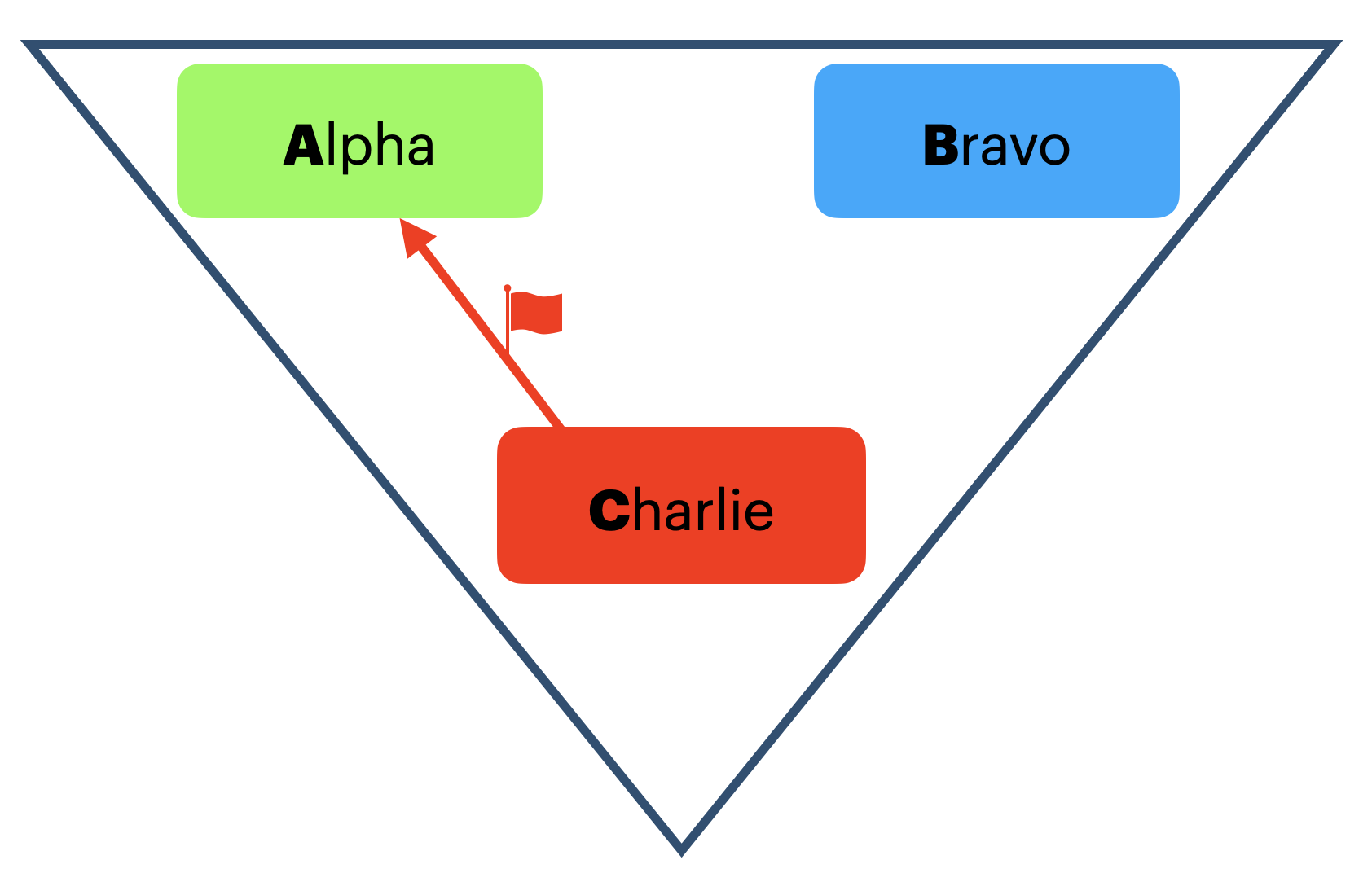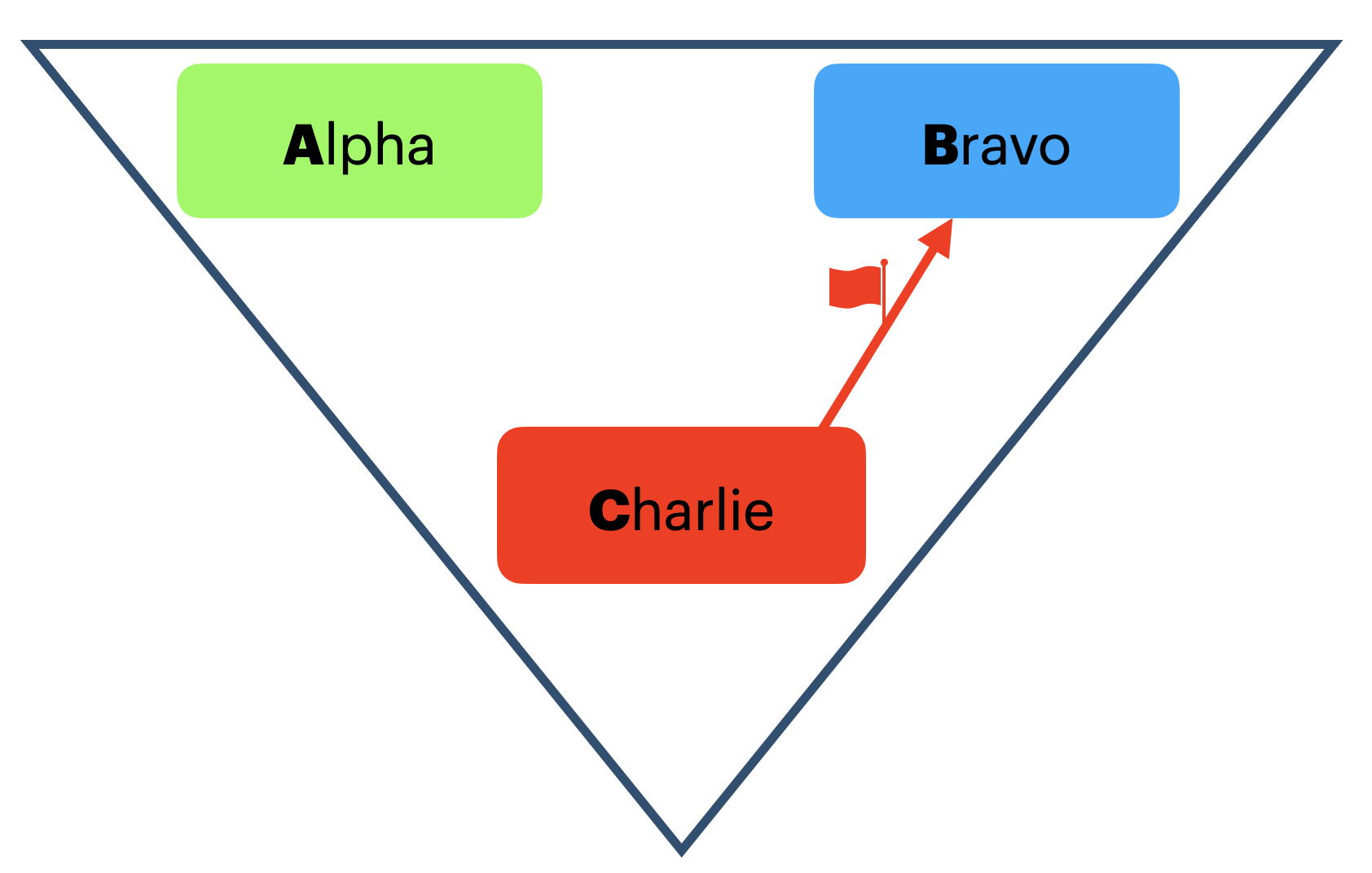Carl Jung and Types
Carl Jung, a Swiss psychologist based in Zurich, observed 4 dimensions of preferences resulting in 16 different psychological types.
The four dimensions of preferences are:
Where do you draw your Energy? Extrovert or Introvert
How do you process Information? Sensing or iNtuition
How do you make Decisions? Thinking or Feeling
What is your preferred Lifestyle? Judging or Perceiving
Note that these are preferences. Your preference may be introversion and solitude, but you can still be able to participate in events with people and enjoy it.
A quick summary of the four preferences follows. To learn more, view the slide show below: Teams & Type.
Where Do You Draw Your Energy?
How Do You Process Information?
Sensing types prefer paying attention to what is perceived through the five senses: seeing, hearing, touching, smelling, and tasting.
Intuition types prefer to pay attention to what is sometimes described as the sixth sense—the unseen world of hunches and insights.
How Do You Make Decisions?
Thinking types prefer to make decisions based on cause and effect reasoning and logic.
Feeling types prefer to make decisions based on values and person-centered criteria, seeking harmony.
How Do You Approach Life?
Judging types prefer to live an ordered life with goals and structures. Judging types are energized by checklists and checking items completed on the list. Js revel in the joy of closure.
Perceiving types prefer to live a spontaneous life with flexibility, staying open to new possibilities. Perceiving types may not start a project until the deadline date because they want to keep their options open. Ps revel in the the joy of processing.
Jung’s Observations About Type Preferences
Jung observed some of these preference characteristics in children as young as three years old, leading him to question whether some of these characteristics are biological in nature. This has been born out now that we have more advanced imaging technology. For example, scans of cerebral activity in extroverts and introverts show a marked difference.
Introverts with no external stimuli show a higher level of cerebral activity as compared to extroverts.
Extroverts, showing a lower level of cerebral activity without external stimuli, show a higher level of cerebral activity when exposed to external stimuli. Interestingly, the introvert when exposed to external stimuli shows an even higher level than the extrovert.
So an introvert may be overwhelmed by cerebral activity when exposed to external stimuli and need to withdraw to more calming surroundings, limiting exposure to external stimuli.
An introvert may be more productive alone on a mountaintop or tranquilly relaxing on a quiet beach.
An extrovert on the other hand may need the external stimuli to generate or fire up cerebral activity. For example, one college student found he had to be in a loud busy pub surrounded by people in order to write his college term papers. Sitting quietly in a corner by himself to study was nonproductive.
Jung contended that we start out with a given preference for each of the four dimensions, but as we age, we can develop the other dimensions that are less preferred. For example, a T (Thinking Type) who prefers making decisions using logic and reason, as time passes may begin to develop the F (Feeling) dimension and begin to make decisions considering how people are affected by the decision.






